|
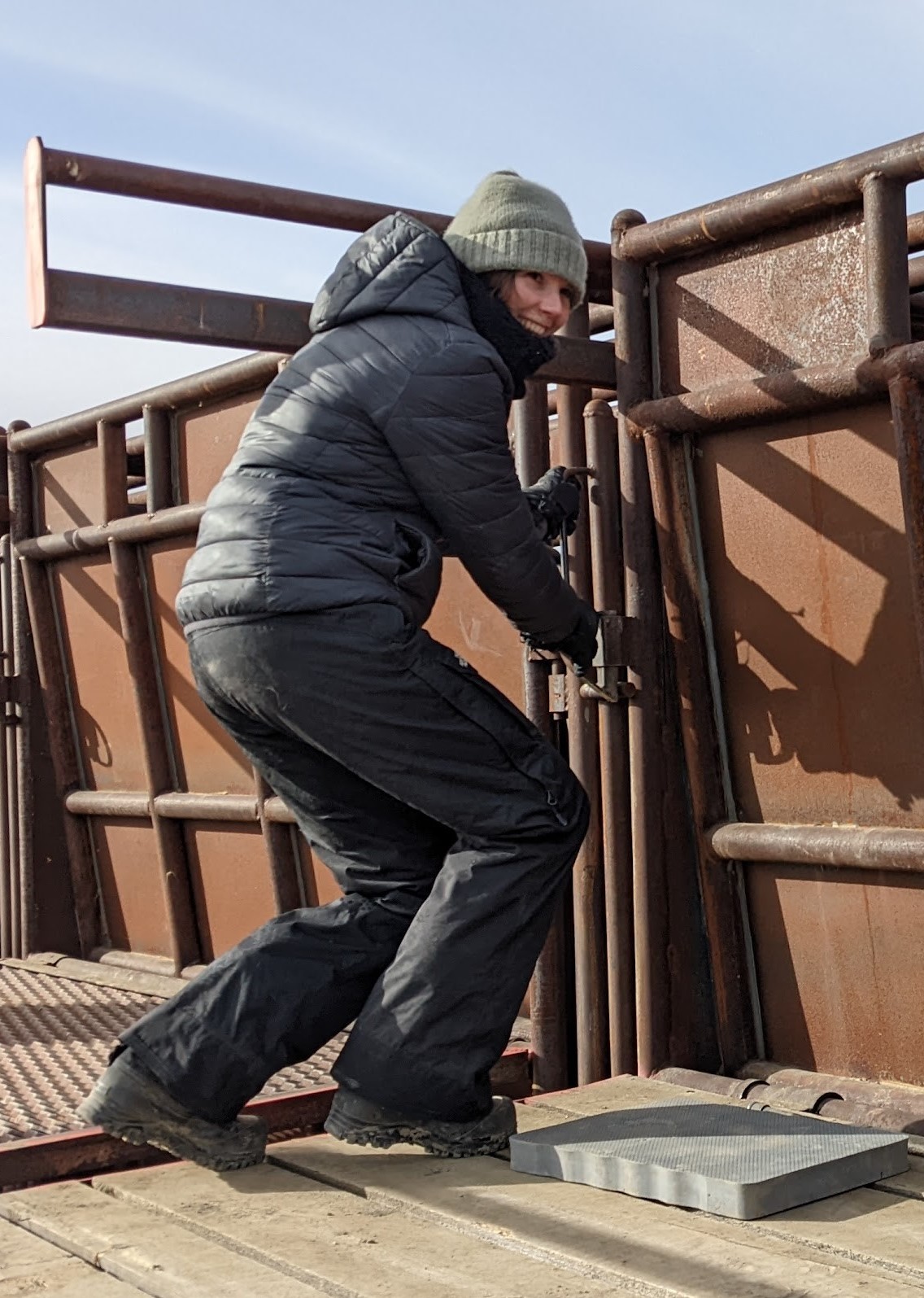
Claire Bresnan
Degree Program:
PhD, Ecology & Environmental Sciences
|
Bison Collective Movement Description: For thousands of years, millions of bison moved across the Great Plains of Montana,
engineering the grasslands through their grazing, wallowing, and trampling. Today,
large free-roaming herds are largely absent from the prairie, and many consider bison
to be "ecologically extinct," no longer playing a significant role in shaping the
landscape. I am studying how reintroduced bison form social groups, move across the
prairie, select foraging sites, and affect grassland productivity. I am utilizing
novel GPS ear tags to track the movements of entire herds, genetics to uncover the
relatedness between individuals, and observations to quantify social bonds and behavior.
I am combining satellite imagery, drone imagery, and nutritional analysis of vegetation
samples to understand how bison impact the growing stages of grasses. By understanding
the social organization of herds and how collective group movements shape the prairie,
stakeholders can make more informed decisions on how to manage the rapidly growing
bison herds across North America.
Location: Northeastern Montana (American Prairie Reserve and Fort Belknap Indian Reservation)
|
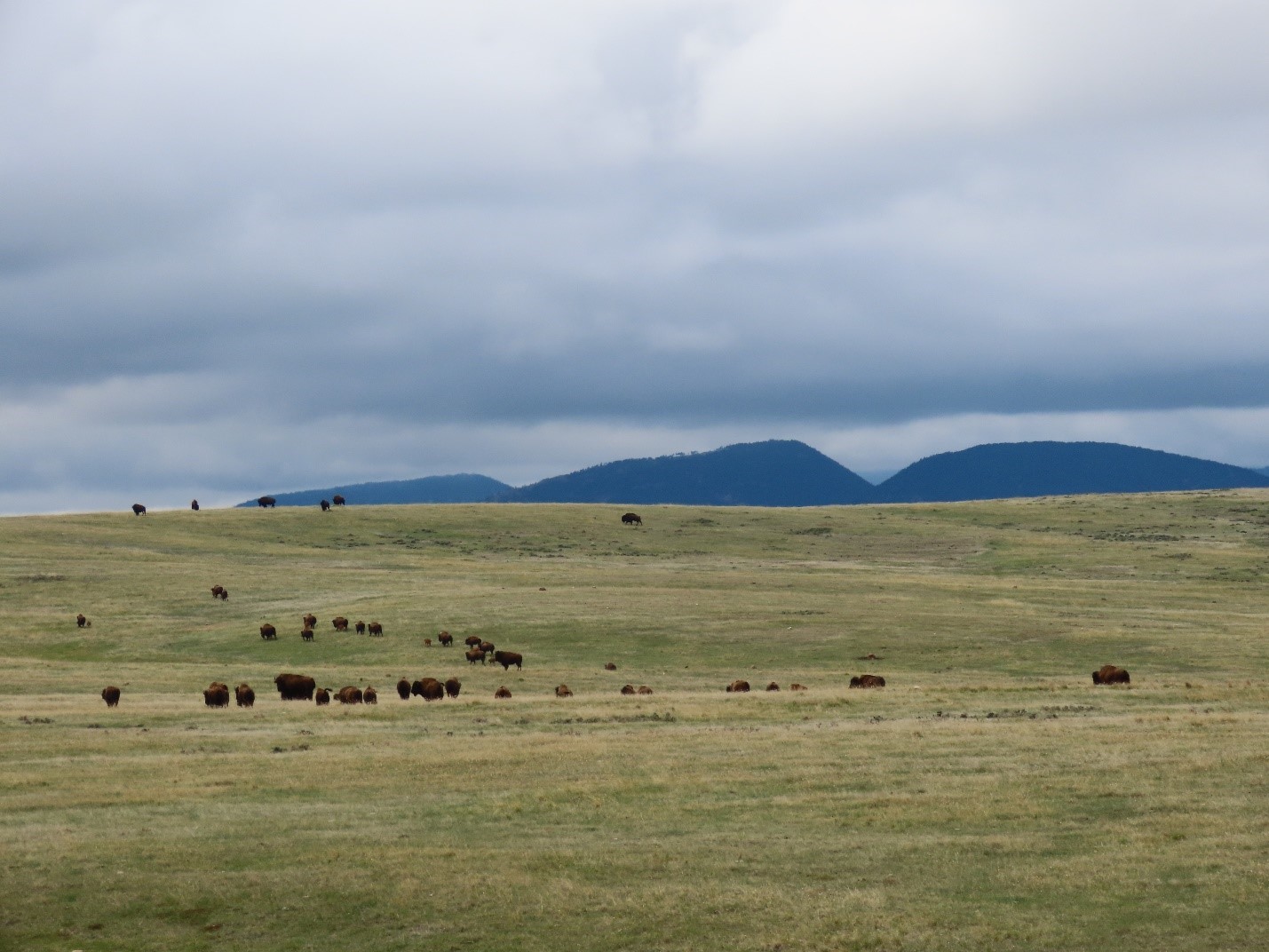 A herd of bison moving across the prairie. A herd of bison moving across the prairie.
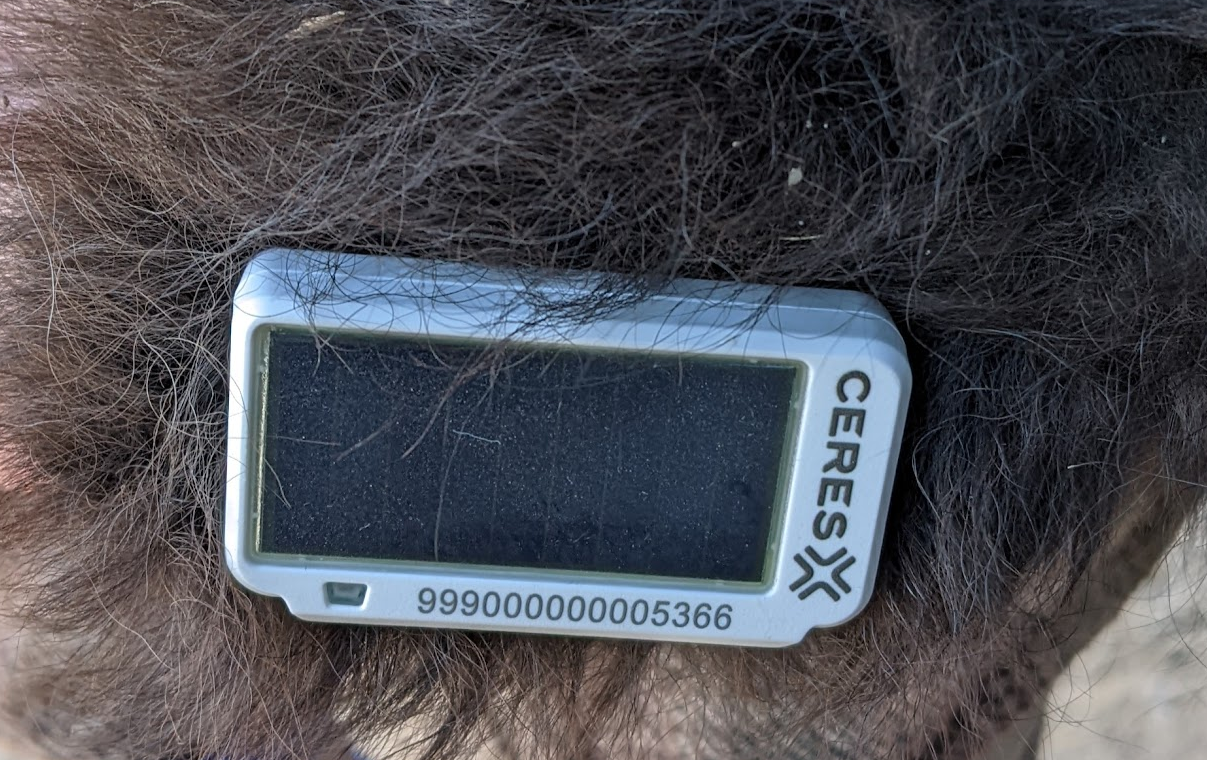 Bison GPS ear tag. Bison GPS ear tag.
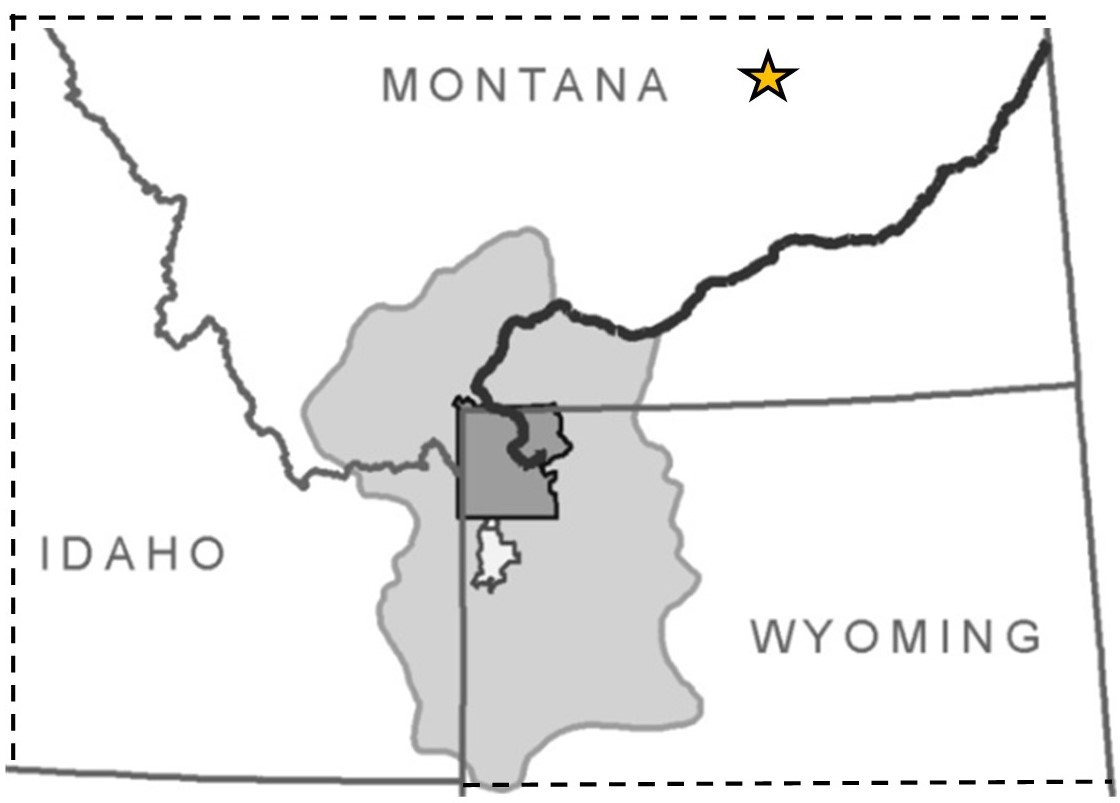
American Prairie Reserve & Fort Belknap Indian Reservation, Northeastern, Montana
|
|
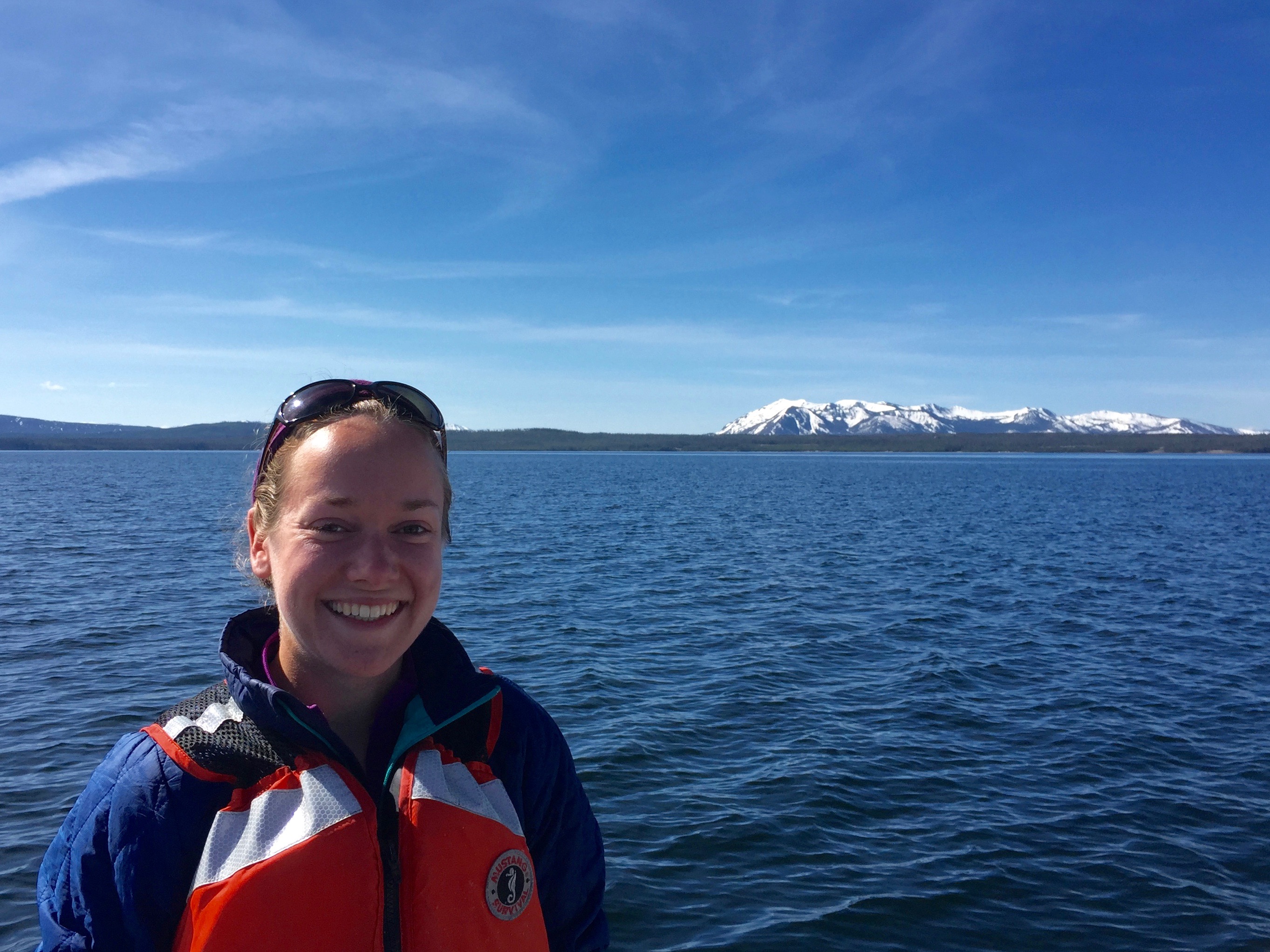
Michelle Briggs
Degree Program: PhD, Fish & Wildlife Biology
|
Evaluating the current status of Yellowstone cutthroat trout in Yellowstone Lake
Decription: The population of Yellowstone cutthroat trout in Yellowstone Lake is nonhybridized
and occupies protected habitat, making it among the most important conservation populations
of Yellowstone cutthroat trout. However, the population is threatened by the presence
of invasive lake trout and by climate change. Despite efforts spanning 25 years to
suppress lake trout and conserve the population, Yellowstone cutthroat trout in Yellowstone
Lake have remained understudied during this period, with little known about the current
population status. The research proposed here will determine population size (abundance),
which of the historic spawning tributaries are currently being used, the overall genetic
diversity and structure of the population, and the response of the Yellowstone cutthroat
trout to lake trout suppression netting. Our results will be used to update recovery
benchmarks for Yellowstone cutthroat trout in Yellowstone Lake and will guide future
conservation and management of the population.
Location: Yellowstone Lake, Yellowstone National Park
|
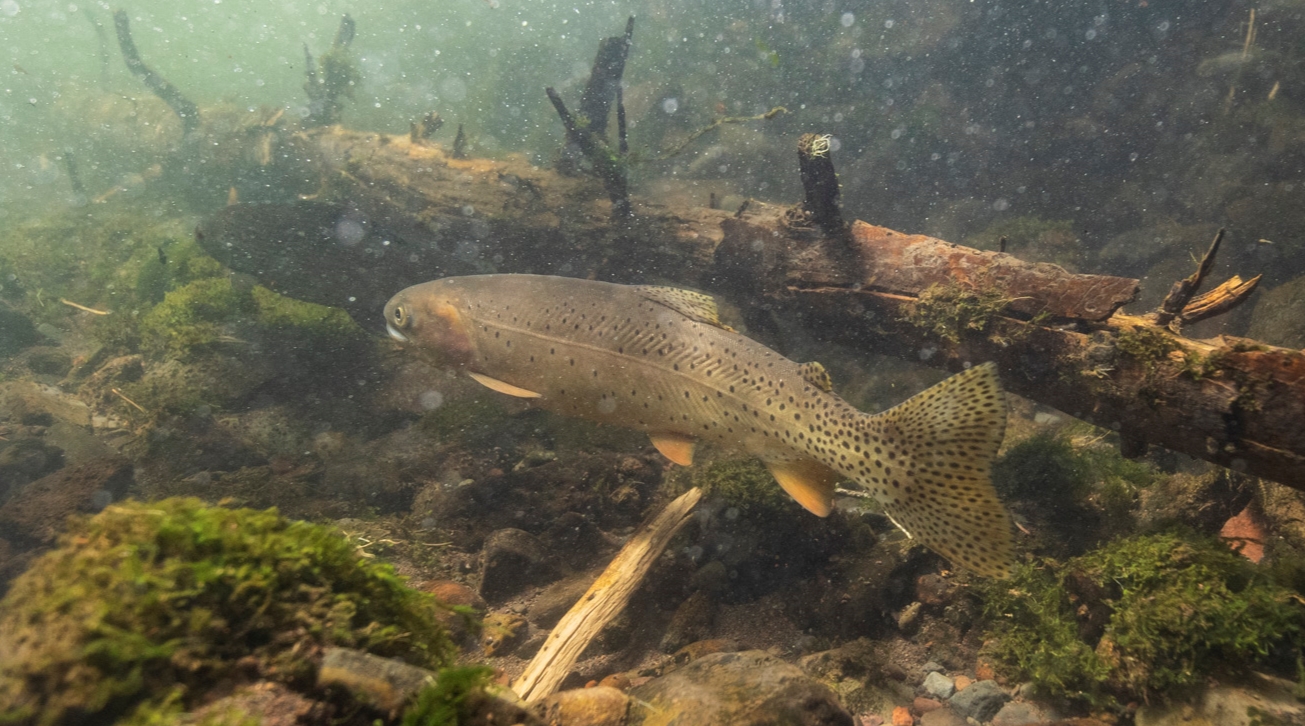 Yellowstone Cutthroat Trout (C. Guy) Yellowstone Cutthroat Trout (C. Guy)
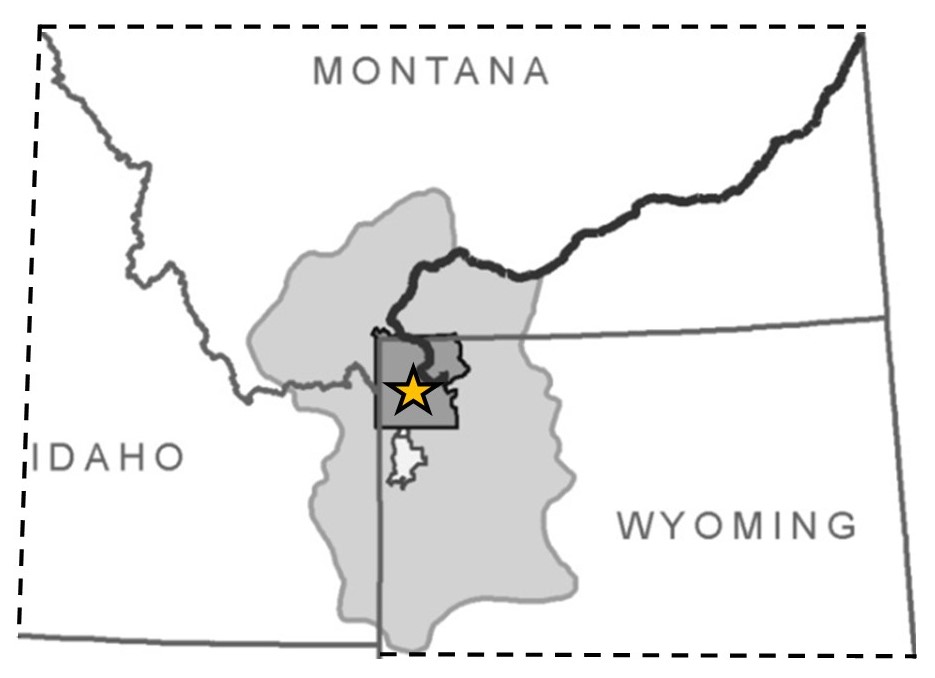 Yellowstone Lake, YNP Yellowstone Lake, YNP
|
|

Lauren Gedlinske
PhD, Ecology & Environmental Sciences
|
Consequences of intraspecific variation in floral scent on pollination and plant reproductive
success
Description: Floral scent (floral volatile organic compounds, or VOCs) mediates important interactions
between plants and pollinators, and therefore can influence the structure of plant-pollinator
communities. Previous work has shown that floral scent varies within and among species
and across the season. Floral scent can also be sensitive to environmental and climatic
changes, resulting in changes in floral VOC emissions (i.e., different scents and
emission rates). Anthropogenic changes in the climate have resulted in more extreme
weather conditions, such as the hotter, drier summers experienced locally in the Gallatin
Valley. These environmental stressors can result in shifts in floral scents which
in turn affects the ability of plants to attract pollinators. Because pollination
is an essential ecosystem service, small changes in pollinator attraction could result
in larger scale changes to plant reproduction and whole communities. However, we don’t
know if or how variation in floral scent alters pollination services and plant reproduction.
I am investigating the consequences of variation in floral scent for wild bee attraction
and subsequent reproductive success of the plant by linking bee visitation to variation
in floral VOCs (sampled in the field and analyzed in-lab), and then collecting seeds
to determine effects on reproduction. To isolate and establish floral scent as a driving
mechanism, I will be using 3D printed flowers to control visual cues and experimentally
manipulate scent. Importantly, these 3D printed flowers will allow further exploration
of the significance of seasonal patterns in floral VOCs, and provide possible predictions
for the effects of climate change by testing pollinator attraction in novel mixes
of plant species anticipated to occur in the future climate. The combination of observational
and experimental approaches will provide new insight on the importance of floral scent,
plant-pollinator community assembly, and elucidate how climate change will affect
plants and pollinators in the future.
Location: Mount Ellis, Bozeman, Montana
|
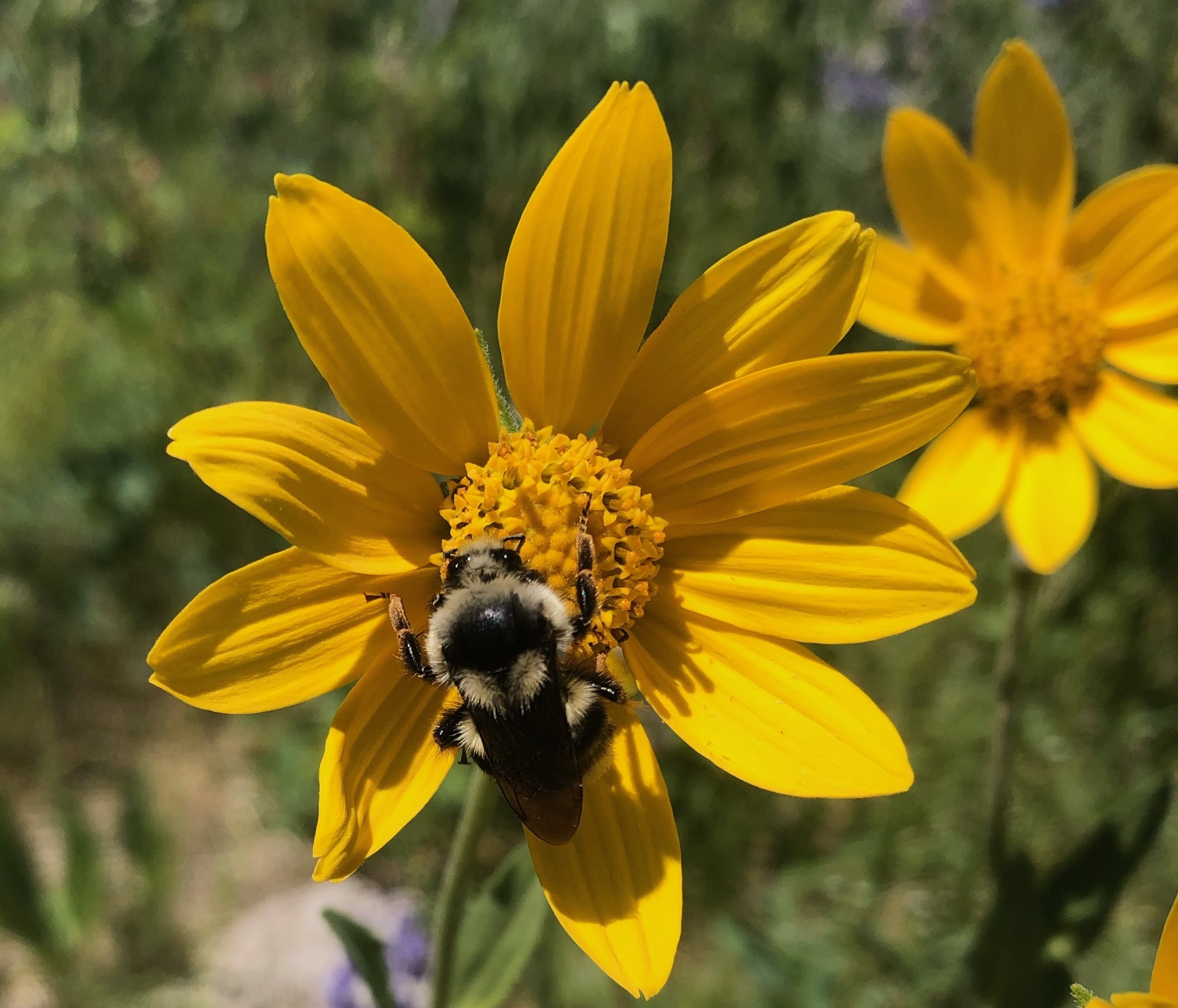 A bumble bee feeds on arnica blossom. A bumble bee feeds on arnica blossom.
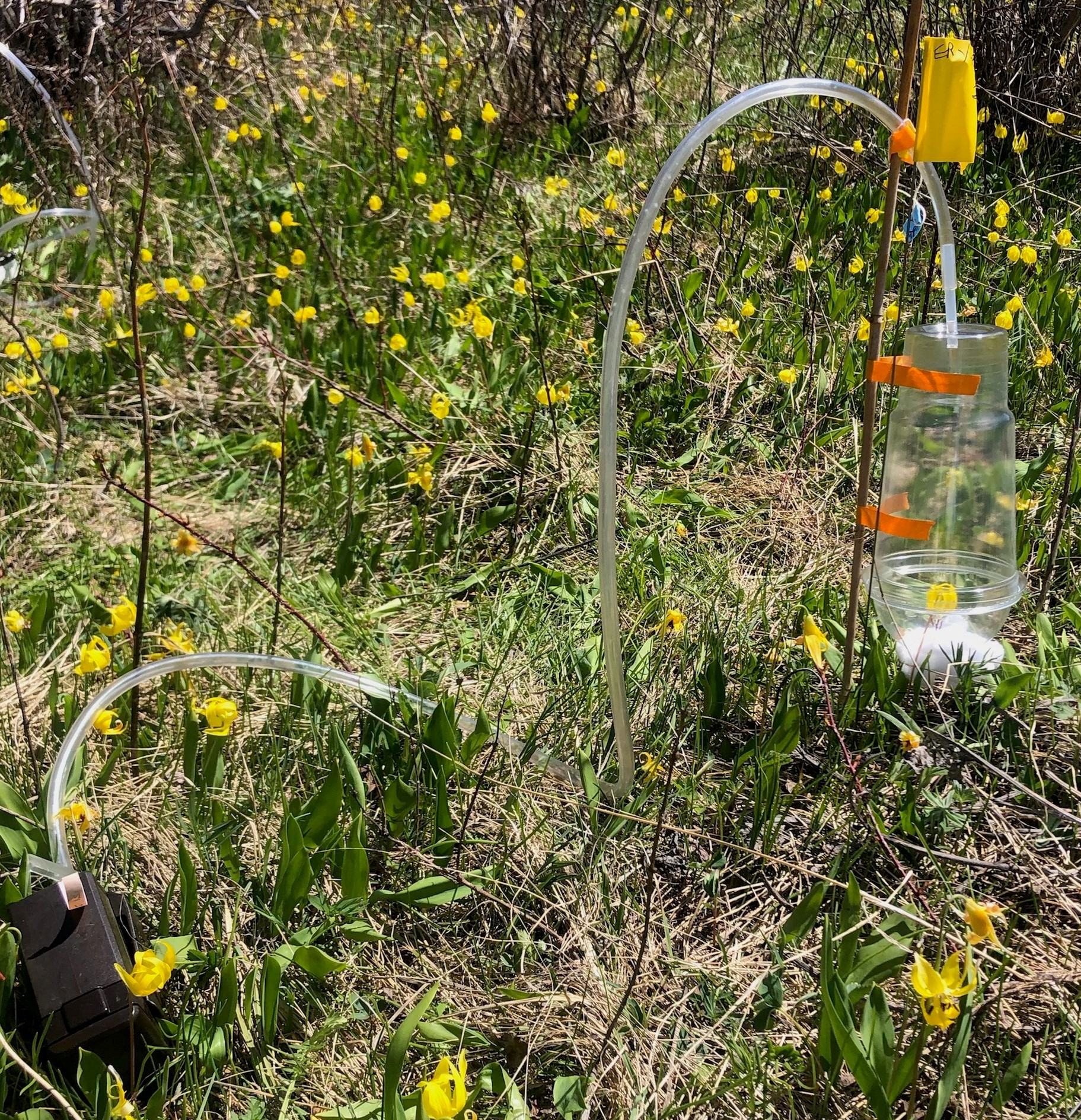 A super "high-tech" contraption (a slushie cup) to collect floral scent. A super "high-tech" contraption (a slushie cup) to collect floral scent.
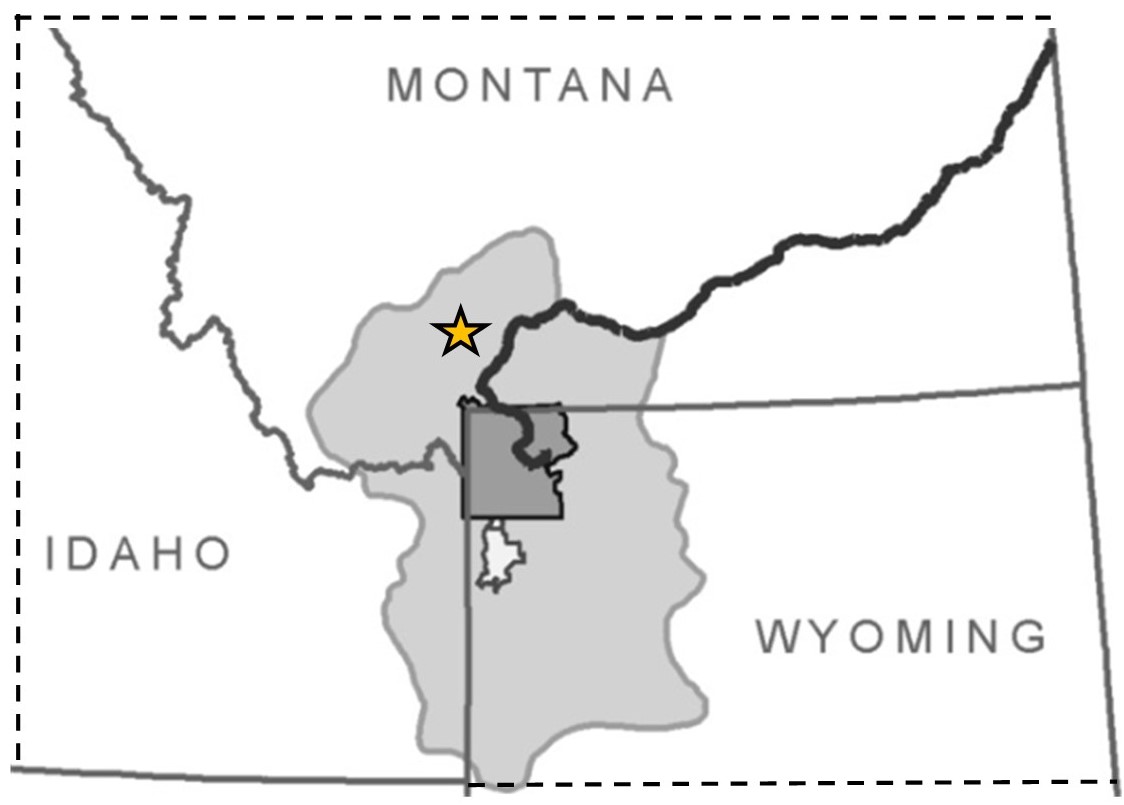 Fort Ellis, near Bozeman, Montana Fort Ellis, near Bozeman, Montana
|
|
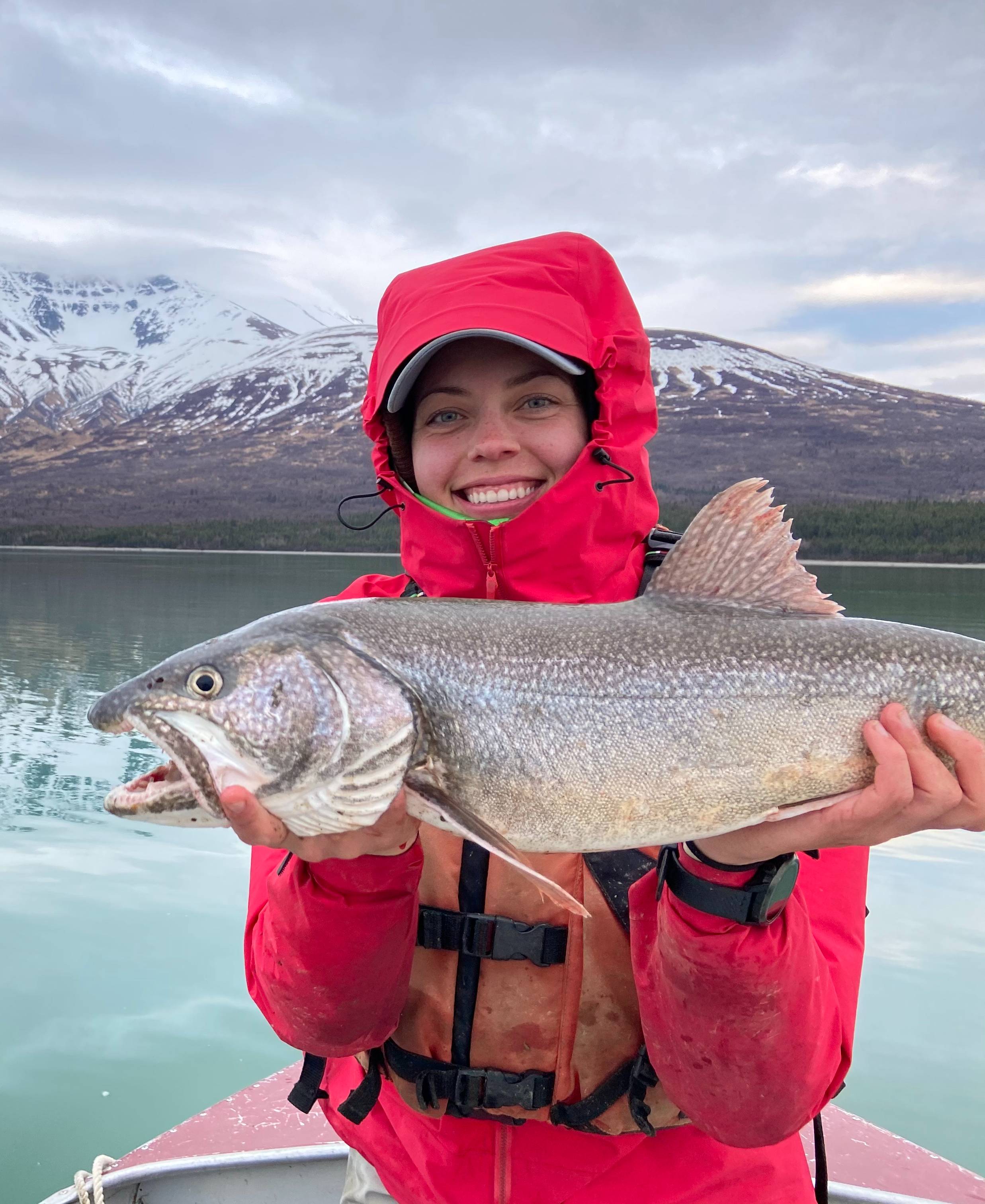
Katie Furey
Degree Program: MS, FIsh & Wildlife Management
|
Feeding ecology and trophic structure of salmonids in Georgetown Lake
Description:
Our research will investigate the trophic relationship among salmonid species in Georgetown
Lake, which will provide insight into whether predatory mechanisms are influencing
the abundance and size of kokanee. Our specific objectives are to: (1) use a diet
analysis study to determine the dietary habits of Gerrard-strain rainbow trout, Eagle
Lake-strain rainbow trout, Arlee-strain rainbow trout, brook trout, and kokanee by
age and size; (2) use stable isotope analysis of dorsal muscle to determine the trophic
relationship among Gerrard-strain rainbow trout, Eagle Lake-strain rainbow trout,
Arlee-strain rainbow trout, brook trout, and kokanee; and (3) use our estimates from
the diets and stable isotope analyses to determine if rainbow trout and brook trout
are consuming kokanee and if so, (a) what strains of rainbow trout are consuming kokanee;
(b) what size of kokanee; (c) what is the estimated consumption rate on kokanee by
rainbow trout strain and brook trout; (d) would the consumption rate influence population
abundance and size structure of kokanee? Results of our work will allow Montana Fish,
Wildlife & Parks to refine the stocking program in Georgetown Lake to continue providing
a premier sports fishery.
Location: Georgetown Lake, Montana
|
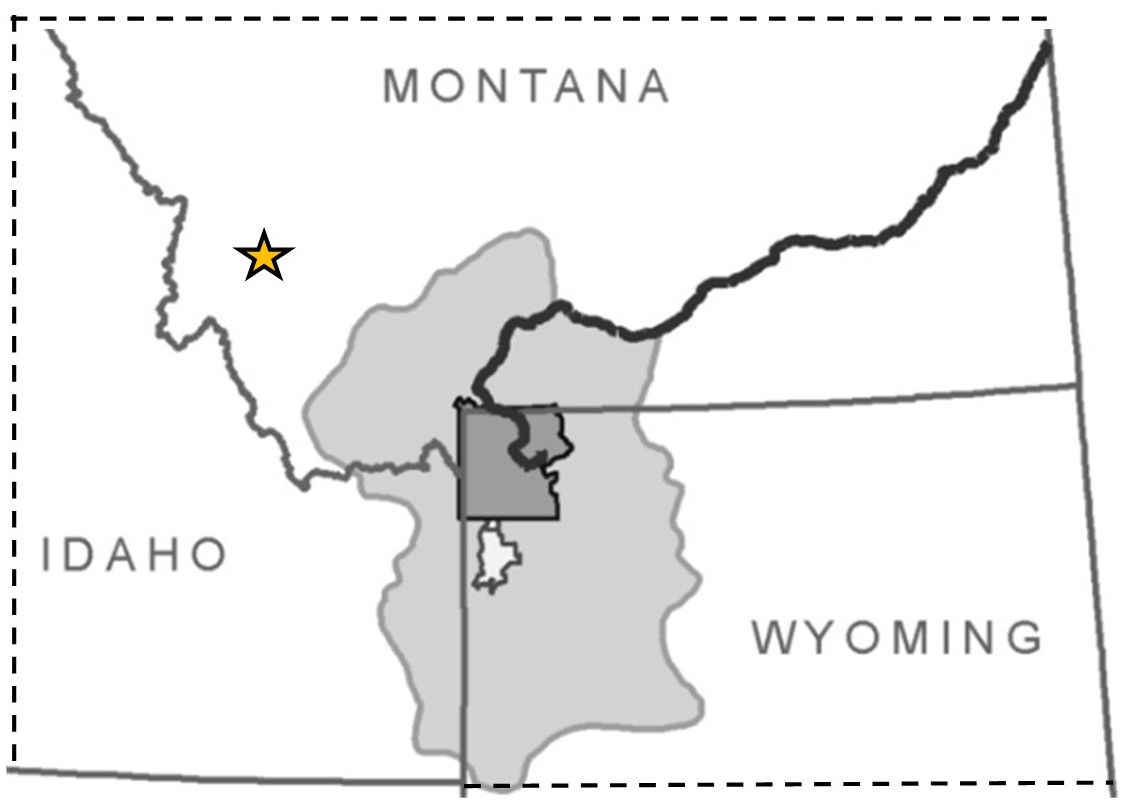
Georgetown Lake, MT
|
|
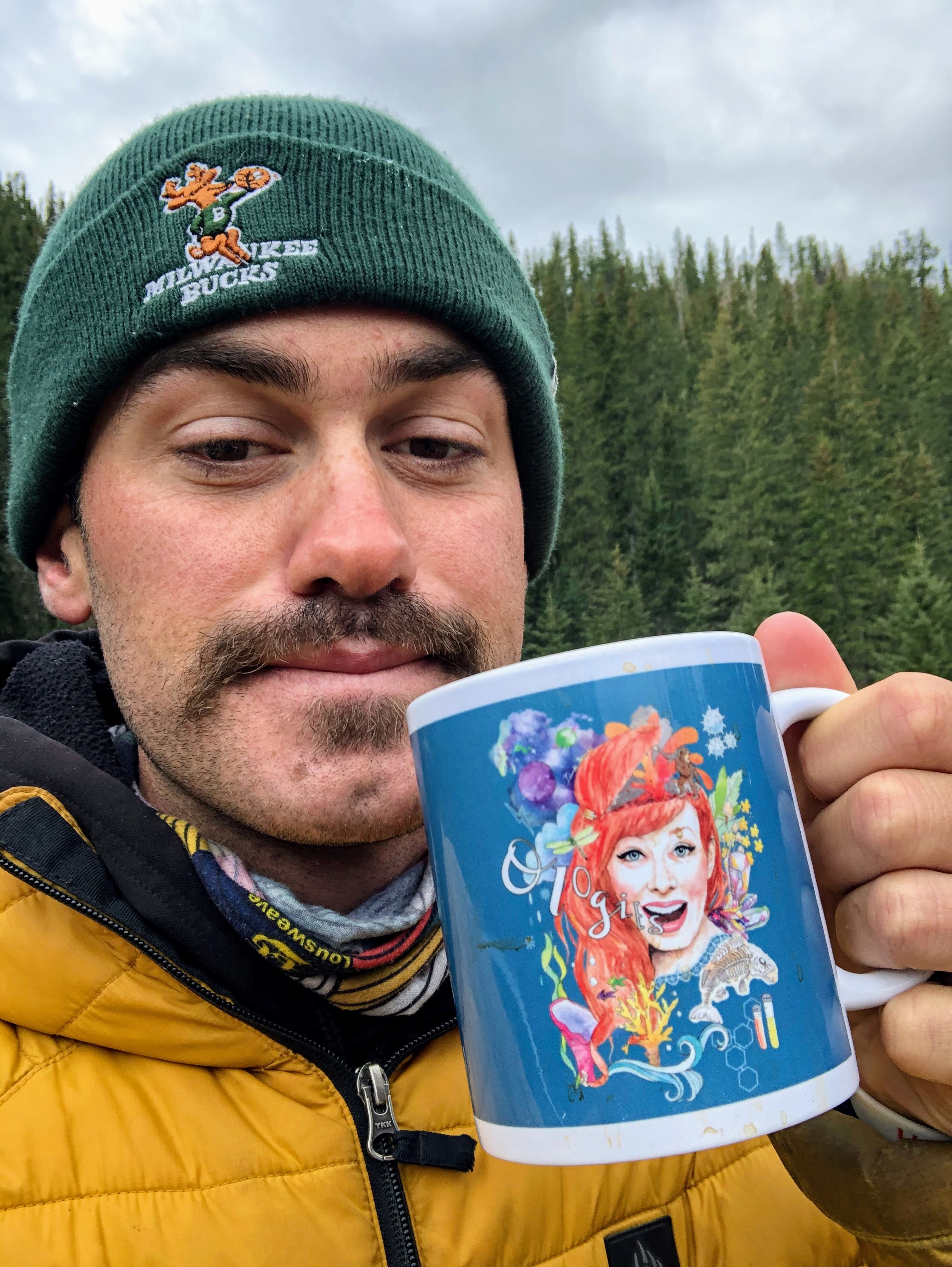
Nate Heili
Degree Program:
MS, Biological Sciences
|
Irrigation ditch ecology: implications for water management in the Gallatin River
watershed
Description: European settlers arrived in the Gallatin valley around 1850 in the search for gold.
What they found was a floodplain that was abundant with life, fertile soil, and water
resources. Quickly, settlers altered the floodplain for agricultural production. Through
time, diversion structures (i.e., irrigation ditches) were built to precisely spread
water across the valley. Today, a 2,000 mile long ditch network conveys surface water
from the Gallatin River to individual farms for irrigation. This rerouting of water
has altered hydrologic patterns in the valley and the response from organisms to adapt
and reclaim these structures as aquatic habitat is not well known. My research aims
to provide a foundational understanding of aquatic insect diversity and abundance
within irrigation ditches, and investigate the potential for aquatic insects to provide
food resources to birds through emergence events.
Location: Irrigation ditches in the Gallatin River Watershed
|
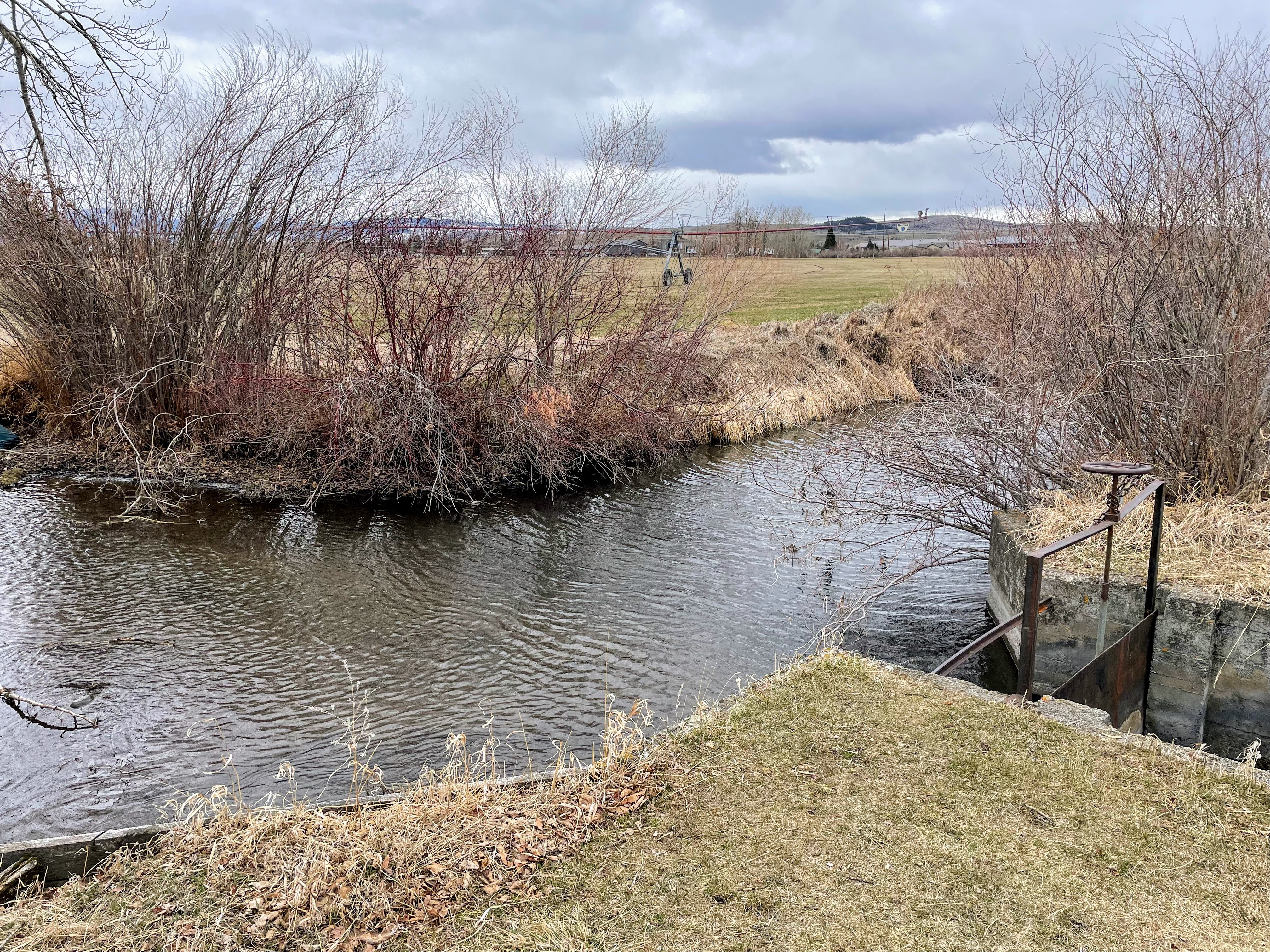
Irrigation ditch in the Gallatin RIver watershed
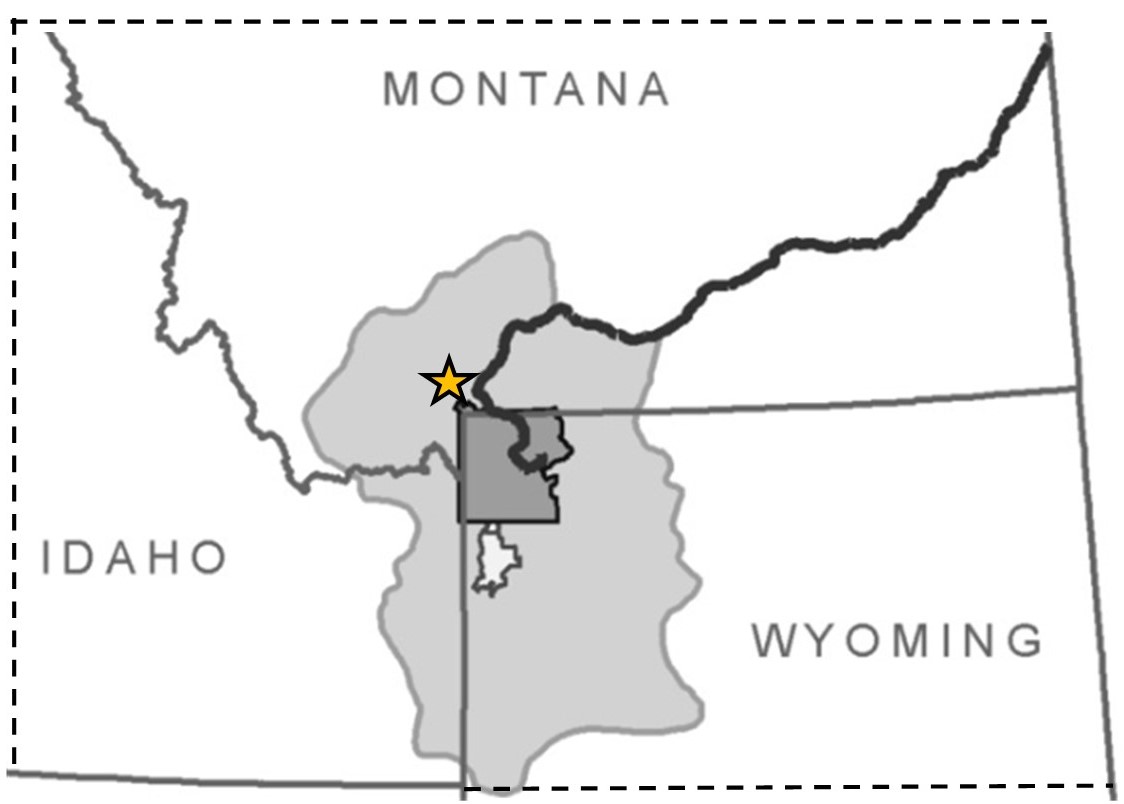
Irrigation ditches in the Gallatin River watershed
|
|
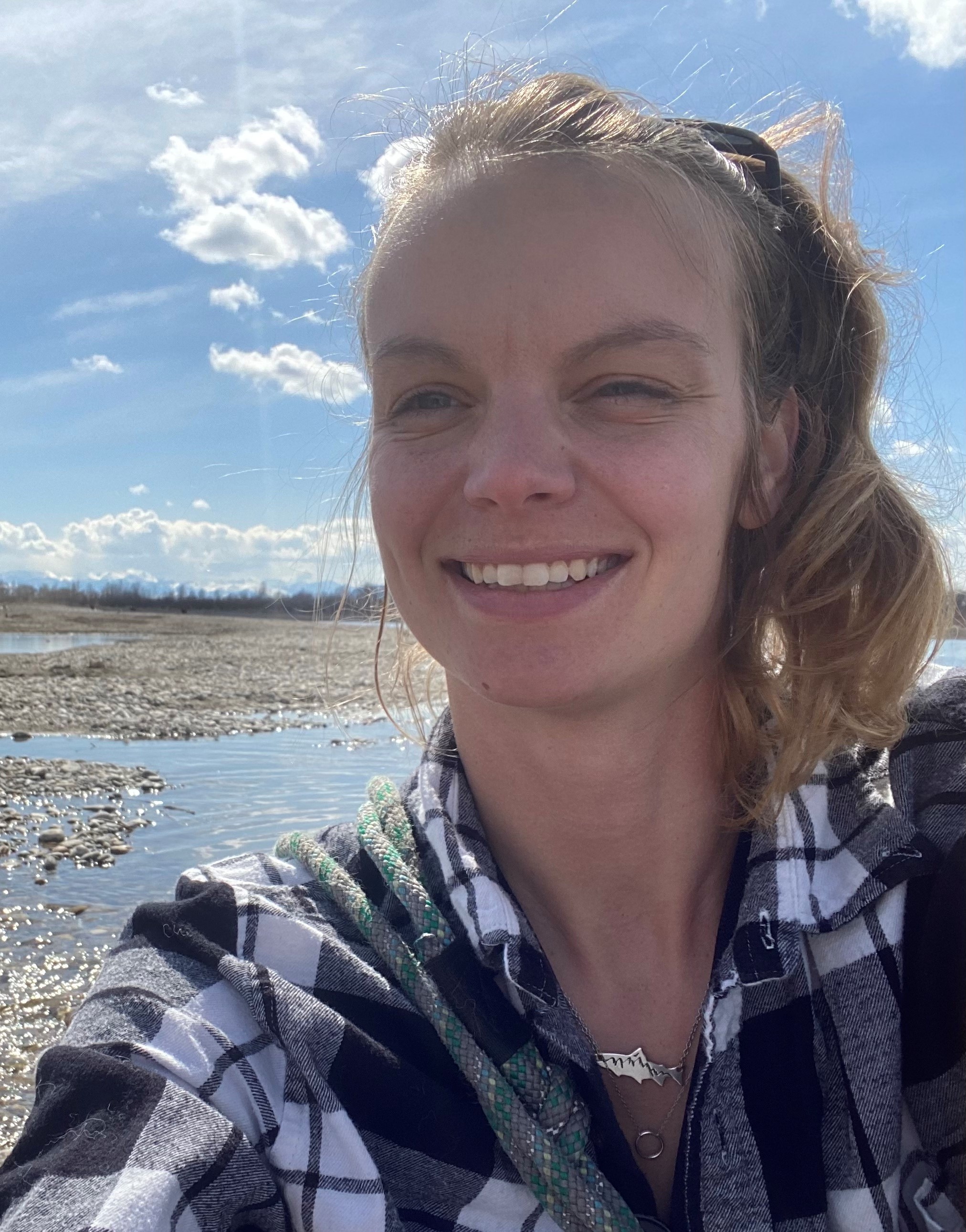
Kadie Heinle
Degree Program: MS, Fish and Wildlife Management
|
Using conservation genetics to inform management on multiple life histories of Yellowstone
cutthroat trout
Description: My research will use conservation genetics techniques to better understand the genetic
structure and variability present in Yellowstone cutthroat trout (Oncorhynchus clarkii bouvieri) in the northern part of their range throughout tributaries of the Yellowstone River
in Montana and part of Yellowstone National Park in Wyoming. The overall goals of
this project are to (1) gain a better understanding of how connected Yellowstone cutthroat
trout populations are in this part of their range across a gradient of land use, (2)
document which tributaries contribute the most to the migratory population of Yellowstone
cutthroat to inform management and conservation actions into the future and (3) provide
baseline information to inform future management approaches based in conservation
genetics techniques.
Location: Tributaries of the Yellowstone River through Paradise Valley, MT and parts of Yellowstone
National Park
|
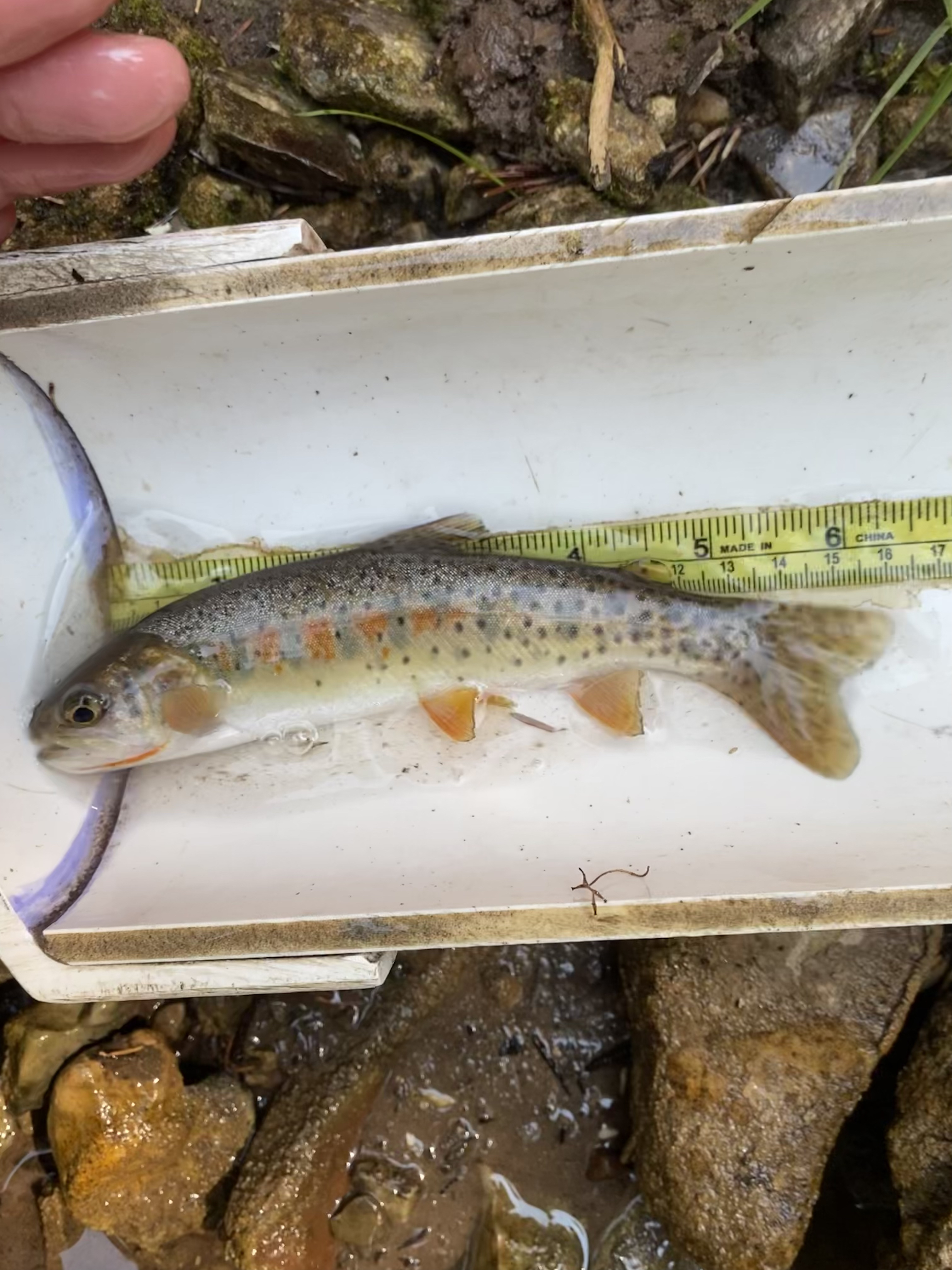 Measuring Yellowstone cutthroat trout Measuring Yellowstone cutthroat trout
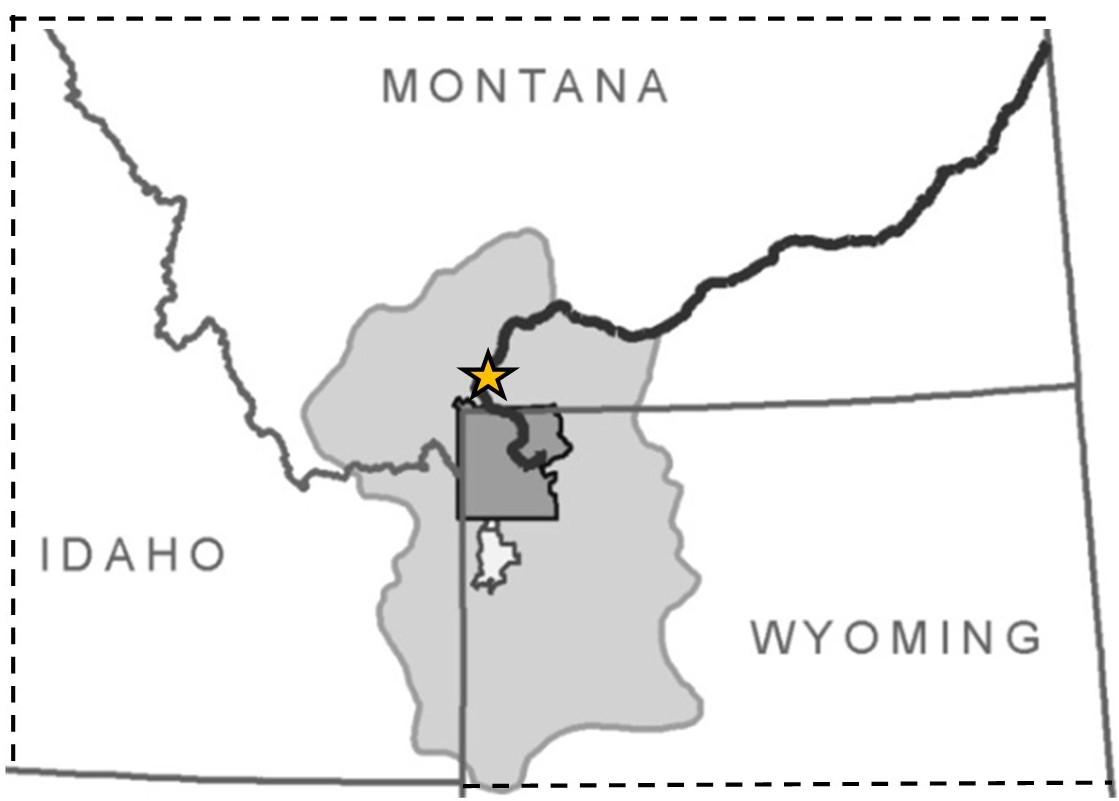 Tributaries of the Yellowstone River through Paradise Valley, Montana and parts of
Yellowstone National Park Tributaries of the Yellowstone River through Paradise Valley, Montana and parts of
Yellowstone National Park
|
|
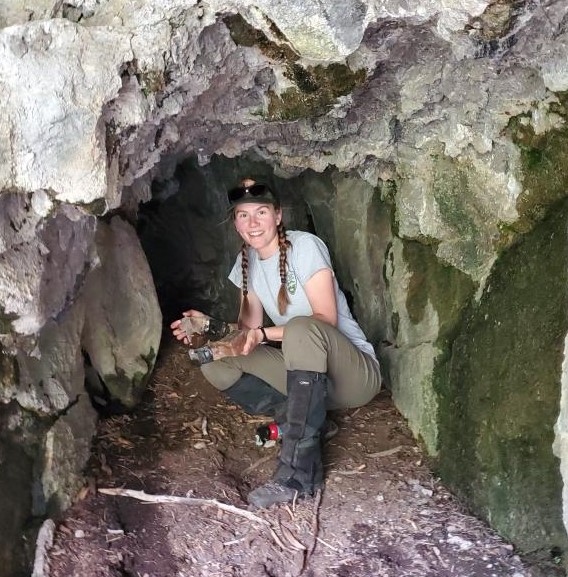
Elise Loggers
Degree Program: MS, Fish and Wildlife Management
|
Physiological Responses of Recreation and Diet in Grizzly Bears
Description: Grizzly bears (Ursus arctos) are flexible foragers who meet their nutritional needs by consuming diverse foods
- from low-calorie vegetation to calorie-rich seeds, fungus, fish, and vertebrates.
When bears consume low-calorie foods, like vegetation, bears may not compensate for
their energy expenditure, instead using their fat reserves for sustenance. Although
elevated stress hormones (cortisol) in grizzly bears have long been attributed to
anthropogenic activity, recent work in Yellowstone National Park suggests diet also
induces bears to produce more cortisol. This work aims to differentiate the roles
of human activity and diet in stress hormone production of bears by measuring cortisol
and chlorophyll (a metric of diet quality) levels in scat. We will collect scat at
the McNeil River Bear Sanctuary and Game Reserve in Alaska, where bears show no physical
response to people, and in Yellowstone National Park to tease apart how diet and human
activity cause bears to use their fat reserves outside of denning season.
Location: McNeil RIver Bear Sanctuary and Game Reserve, Alaska, and Yellowstone National Park
|
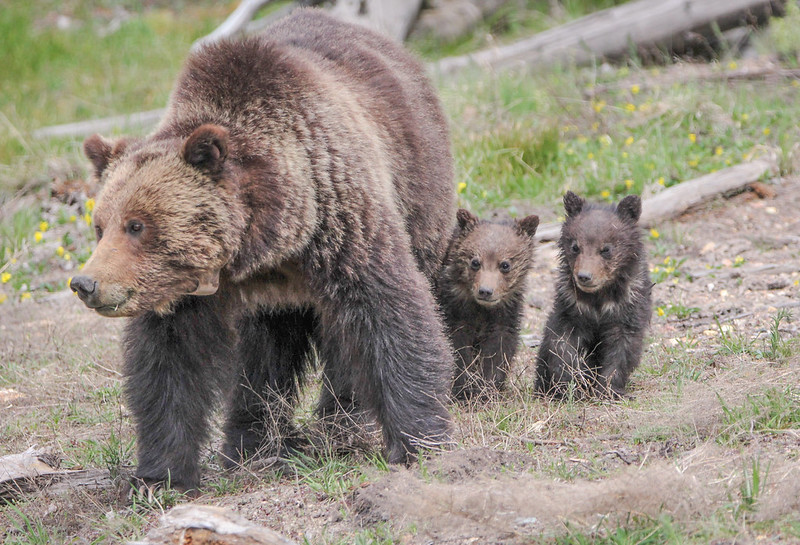 Grizzly with cubs--NPS photo Grizzly with cubs--NPS photo
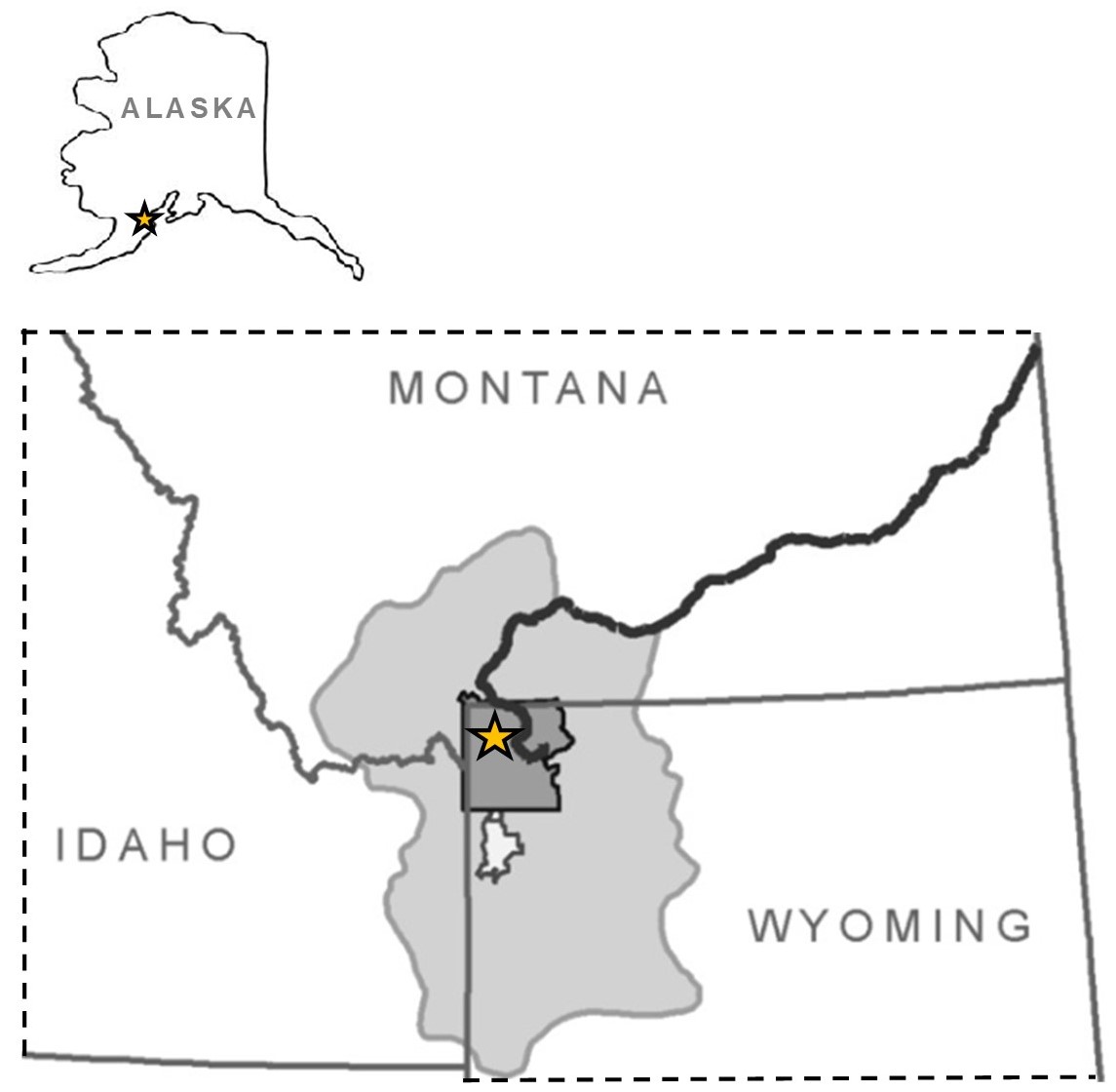
McNeil River Bear Sanctuary and Game Reserve, Alaska & Yellowstone National Park
|
|
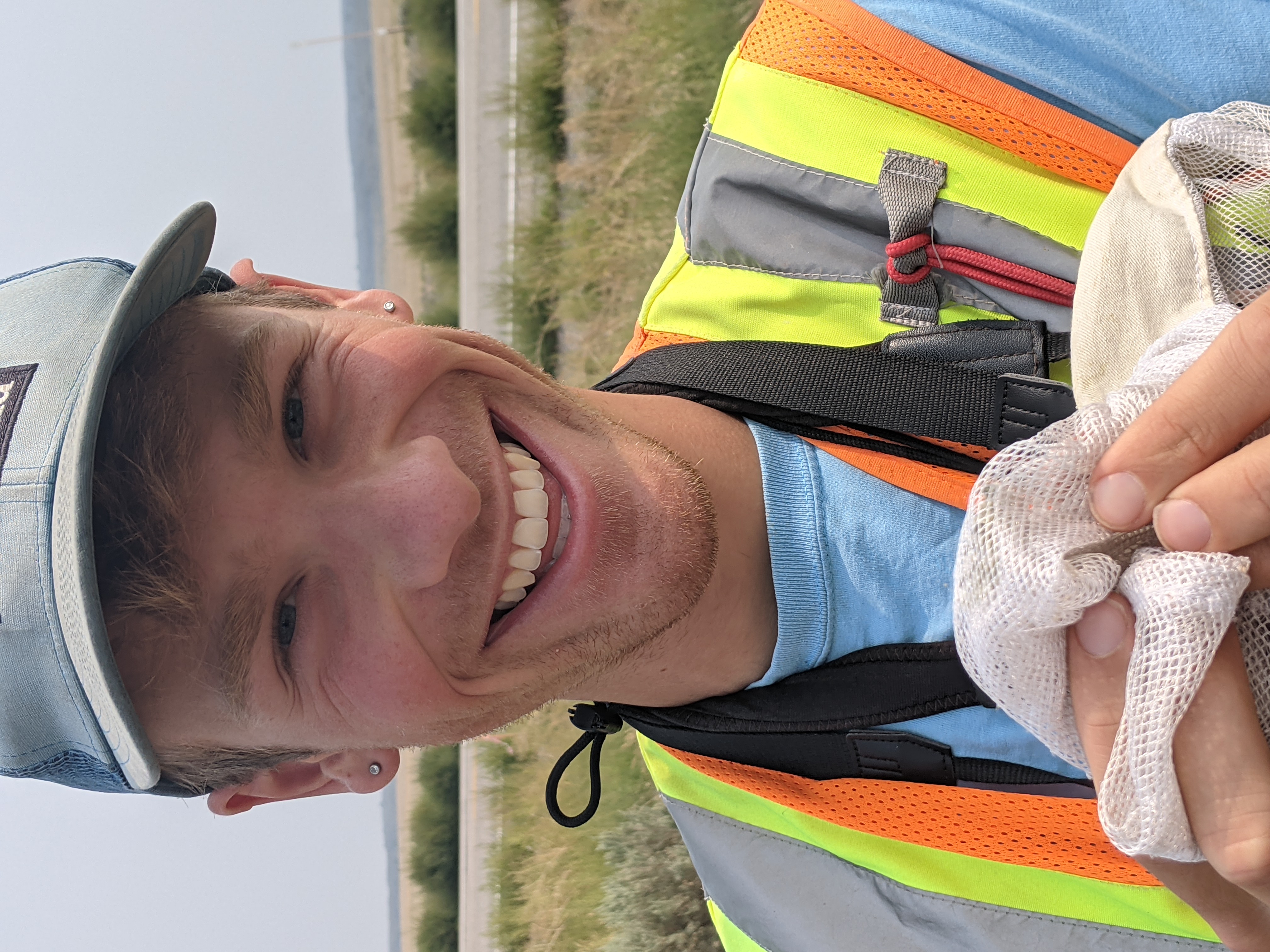
Thomas Meinzen
Degree Program: MS, Biological Sciences
|
Idaho Roadside Pollinator Research and Conservation Project
Description: This research project aims to identify priority locations of monarch breeding habitat
along roadsides in southern Idaho and to assess pollinator distribution and diversity
in right-of-way zones, with a goal of recommending specific management strategies
to enhance pollinators along roadsides in Idaho and beyond. Using NDVI-stratified
transects and rapid assessment techniques, the project will evaluate the ways that
road class, habitat type, and management regime relate to bee and butterfly community
health.
Location: Snake River Plain of southern Idaho
|
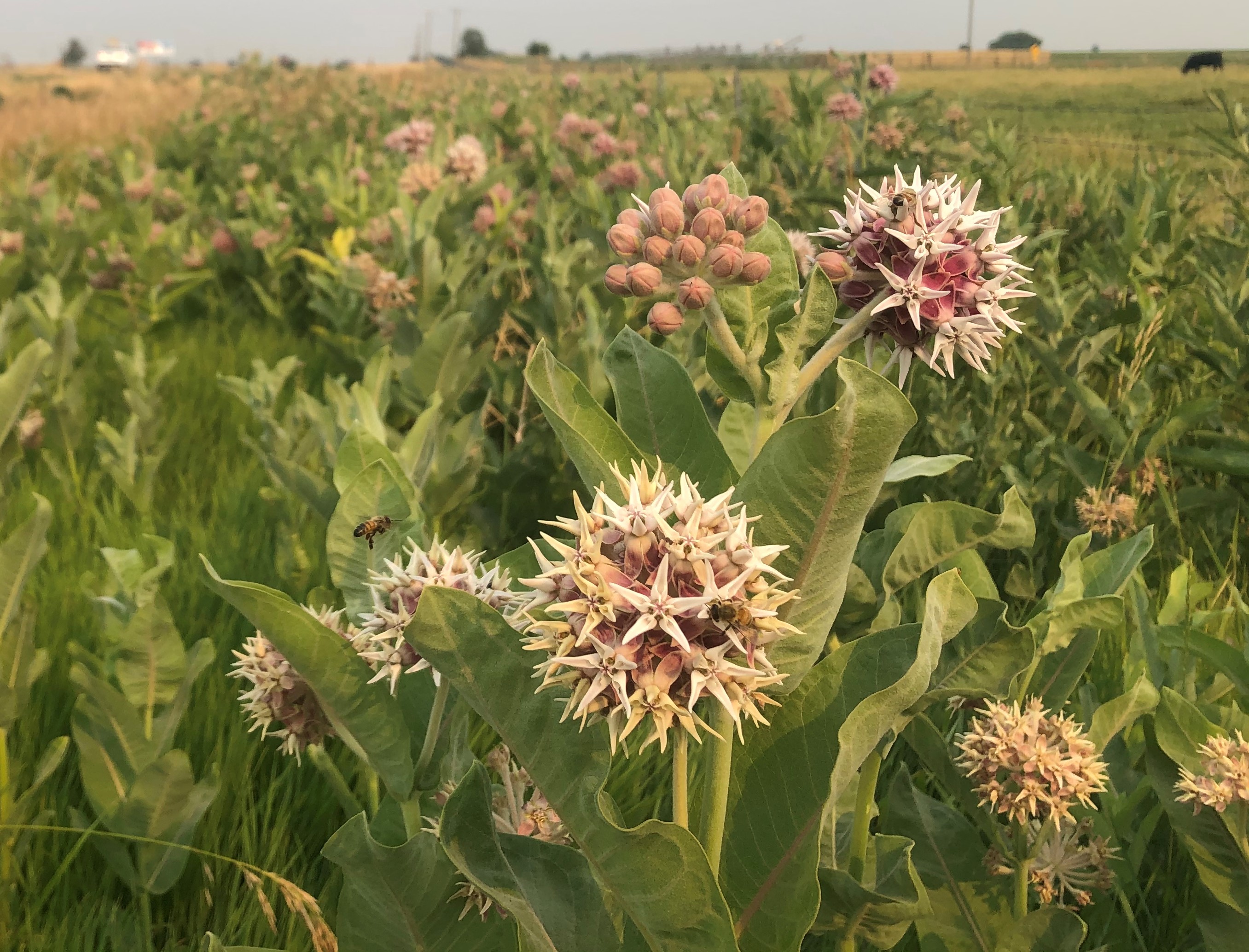 Roadside milkweed. Photo by Thomas Meinzen Roadside milkweed. Photo by Thomas Meinzen
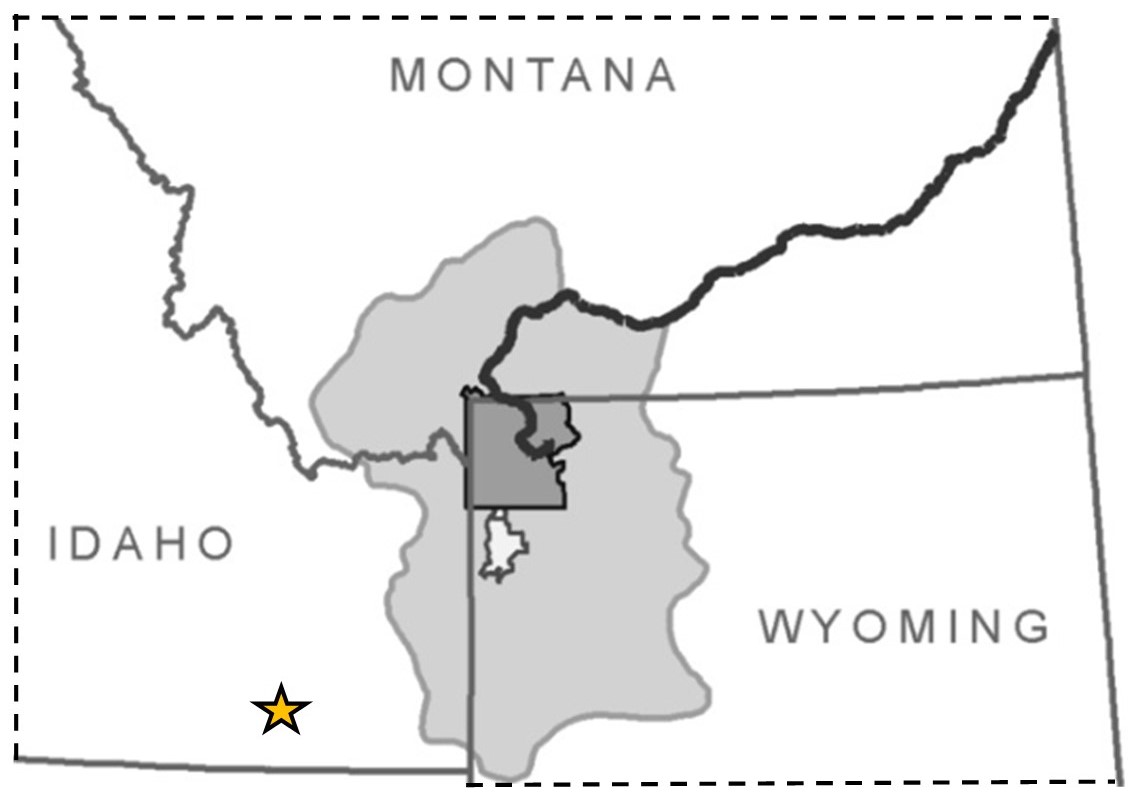 Snake River Plain of Southern Idaho Snake River Plain of Southern Idaho
|
|
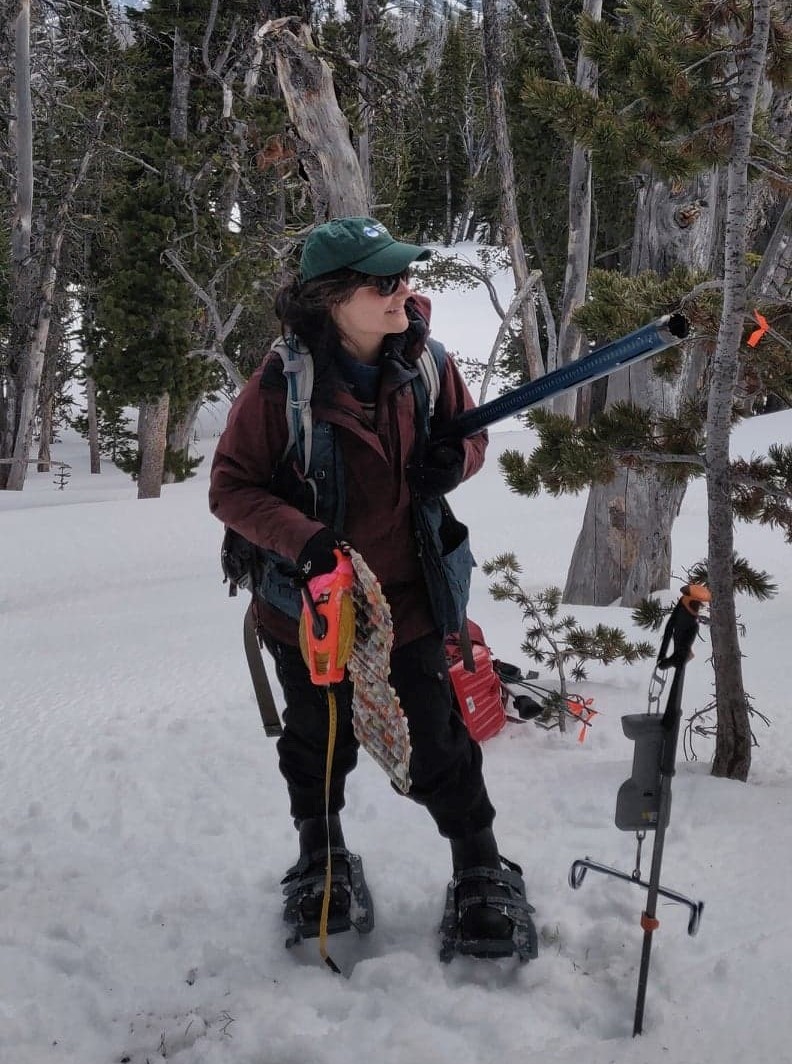
Teodora Rautu
Degree Program: MS, Biological Sciences
|
Hydrologic effects of whitebark pine on snowpack and streamflow
Description: Whitebark pine trees (Pinus albicaulis) have suffered extensive mortality in the Rocky Mountains due to bark beetle infestations,
blister rust infections, drought, and climate change. However, the effect of this
mortality on watershed hydrology remains poorly understood. My research will be the
first to quantitatively assess the effects of the keystone whitebark pine species
on streamflow and snowpack within the Greater Yellowstone Ecosystem (GYE). I will
conduct streamflow sampling and snowpack assessments across whitebark pine stands
with different canopy attributes including levels of mortality (low vs. high canopy
damage extent) and stand densities (open, moderate, and closed canopy cover). Field
measurements collected in 2022 and 2023 will be used to calibrate a daily water balance
model to assess the partitioning of precipitation into runoff and evapotranspiration
in whitebark pine stands. The ability to forecast hydrologic changes within whitebark
pine stands will contribute to more successful water conservation and species preservation
management strategies across the GYE.
Location: Custer Gallatin National Forest (Hyalite Canyon & Beehive Basin, MT) and Shoshone
National Forest (Republic Creek, WY)
|
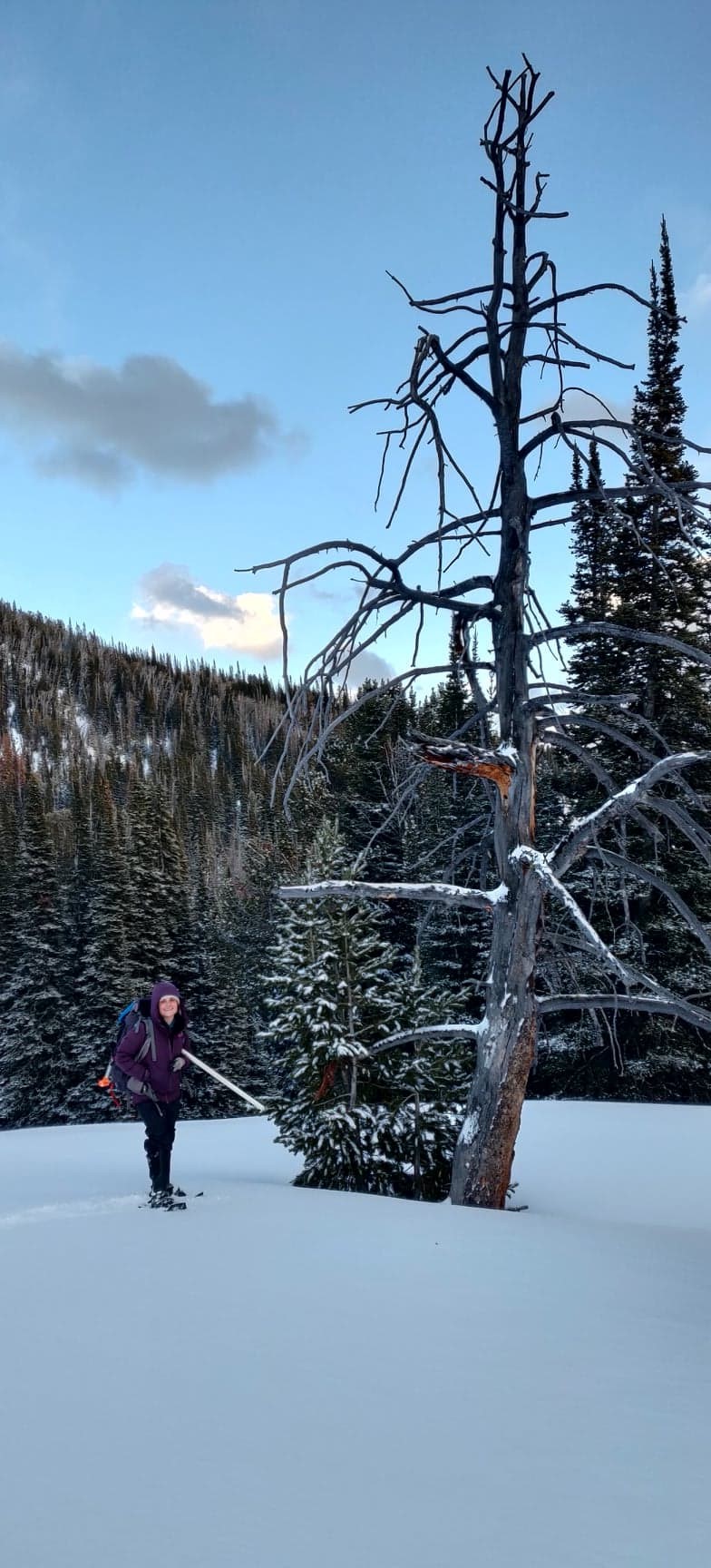 Dead whitebark pine Dead whitebark pine
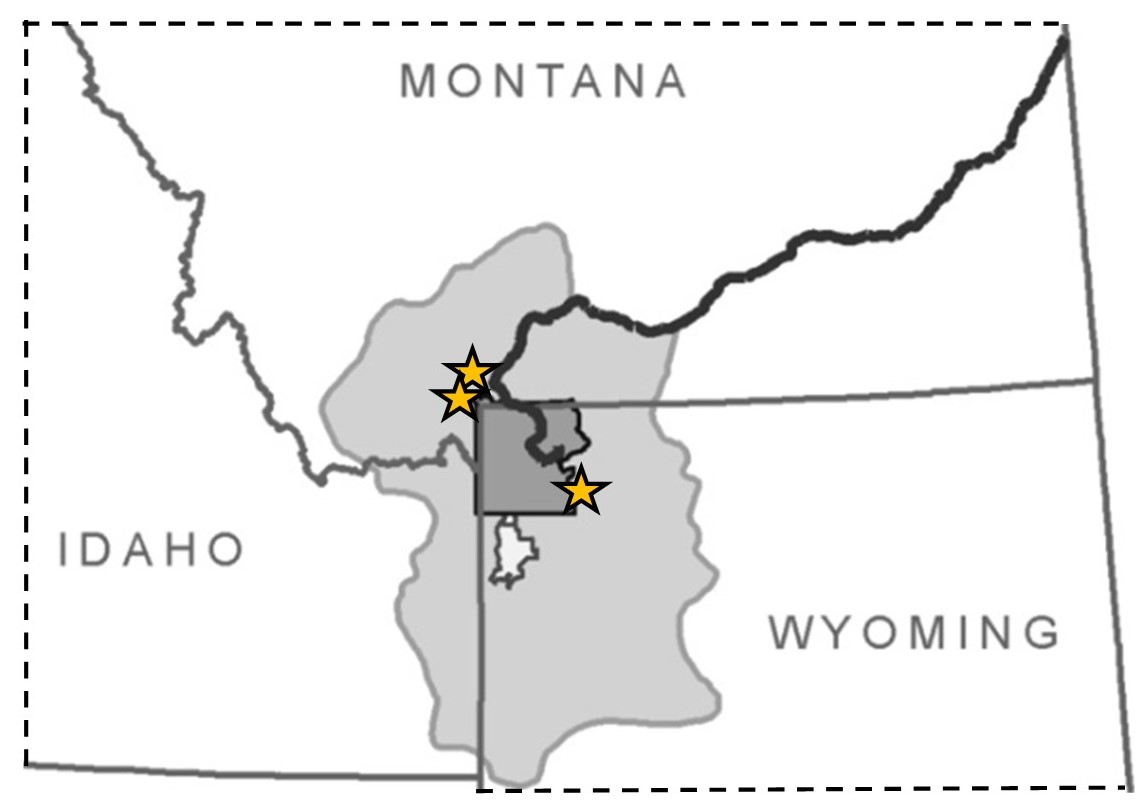 Custer Gallatin National Forest (Hyalite Canyon & Beehive Basin, MT) and Shoshone
National Forest (Republic Creek, WY) Custer Gallatin National Forest (Hyalite Canyon & Beehive Basin, MT) and Shoshone
National Forest (Republic Creek, WY)
|
|
 Alzada Roche Alzada Roche
Degree Program: MS, Fish & Wildlife Management |
Cross Boundary Temperature Regimes and their Effects on Aquatic Insect Emergence
Description: Salmonflies, an important food source for riparian consumers, depend on spring water
temperature cues to time their emergence with favorable conditions in the terrestrial
environment for mating and oviposition. With climate change, air temperatures in the
Greater Yellowstone Area are projected to rise uniformly throughout the year, while
water temperatures are predicted to rise in the summer and fall, but remain consistent
or even display a slight cooling trend in spring and winter. The disparate trends
in water and air temperature due to climate change have the potential to create a
mismatch between spring temperature cues and subsequent temperature conditions in
water and air at the time of emergence during early summer. This project tests the
effects of water and air temperatures on salmonfly lifespan and survival during the
time of emergence using a laboratory experiment that simulates likely air and water
temperature combinations under climate change.
Location: Madison River, Southwest Montana
|
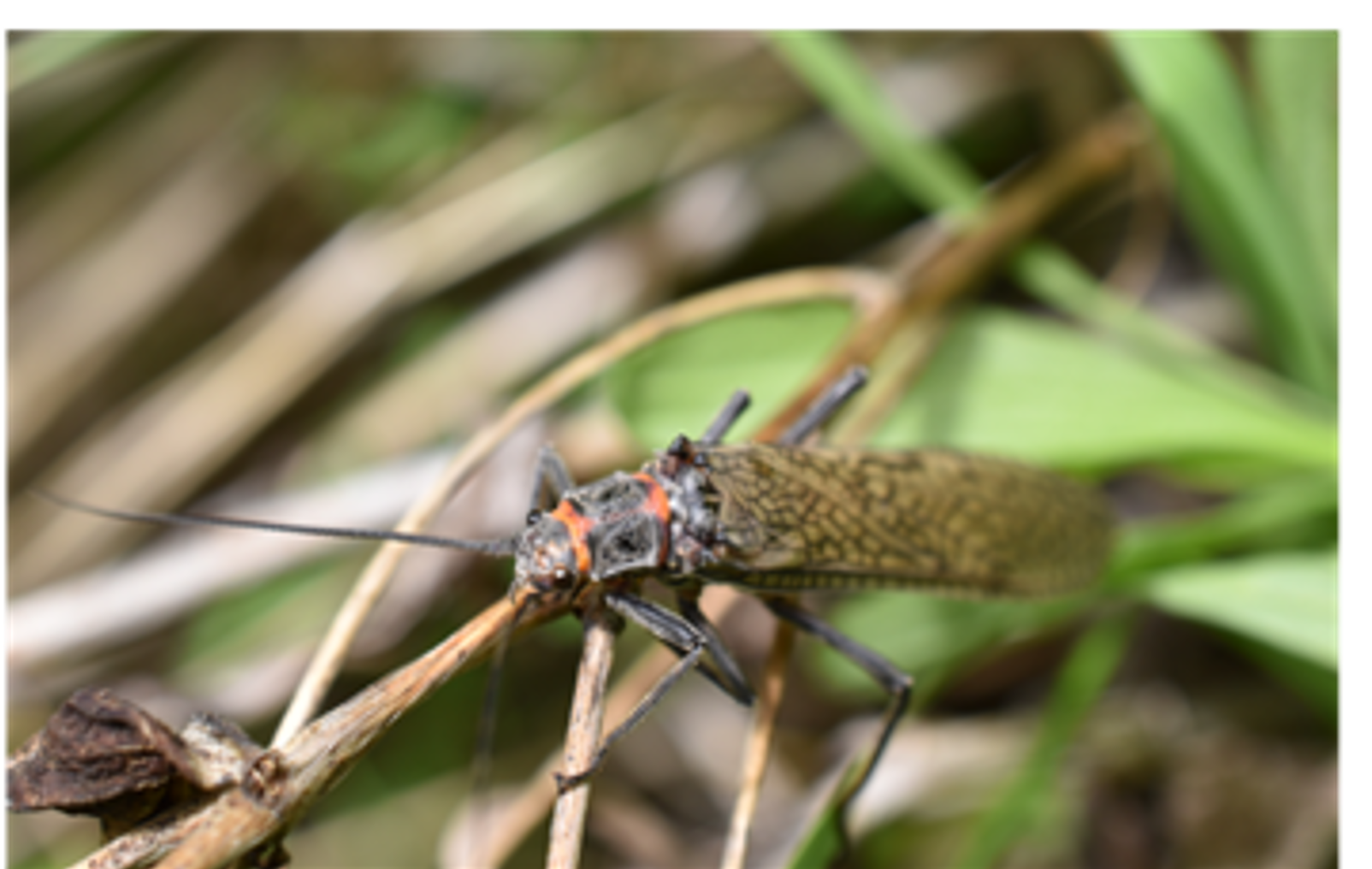 Adult Salmonflies emerge on the Madison RIver between mid-June and early July. (Photo
by Mike MacDonald) Adult Salmonflies emerge on the Madison RIver between mid-June and early July. (Photo
by Mike MacDonald)
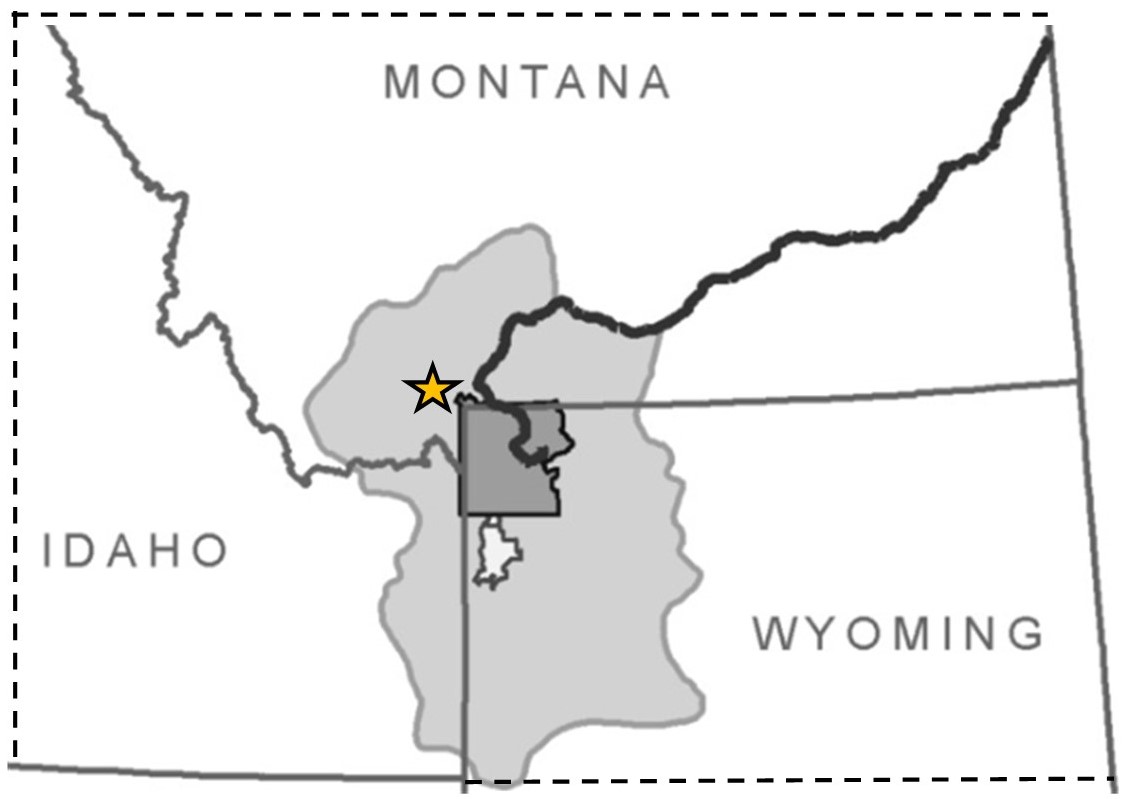
Madison River, Southwest Montana
|
|
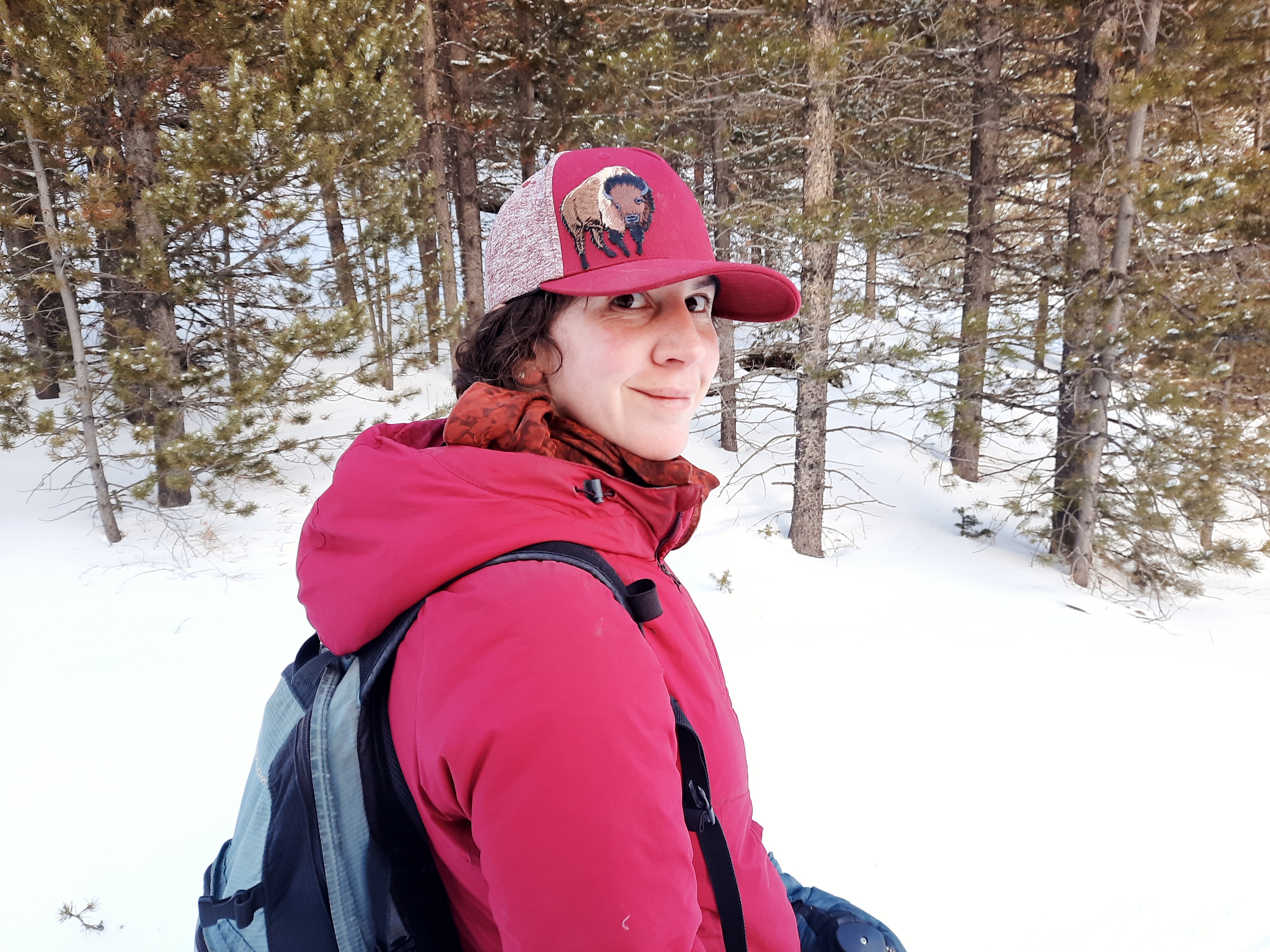
Carlisle Segal
Degree Program: MS, Biological Sciences
|
Investigating heterogeneity as a driver of diversity in grassland plant and arthropod
communities.
Description: Environmental heterogeneity can increase biodiversity, by creating diverse conditions
that support the needs of different species. In grassland ecosystems heterogeneity
has historically been driven by disturbance from climate, fire, and megaherbivore
grazing practices. In Yellowstone National Park (YNP) American Bison (Bison bison) are dominant grazers on the landscape creating a differential mosaic in vegetation
structure as they graze across the landscape. My research focuses on the structure
of arthropod communities as a function of vegetation heterogeneity across the gradient
of disturbance in bison-grazed grasslands of YNP. We are hoping to learn whether certain
conditions provide an opportunity for increased richness among arthropod functional
groups.
Location: Northern range grasslands of Yellowstone National Park
|
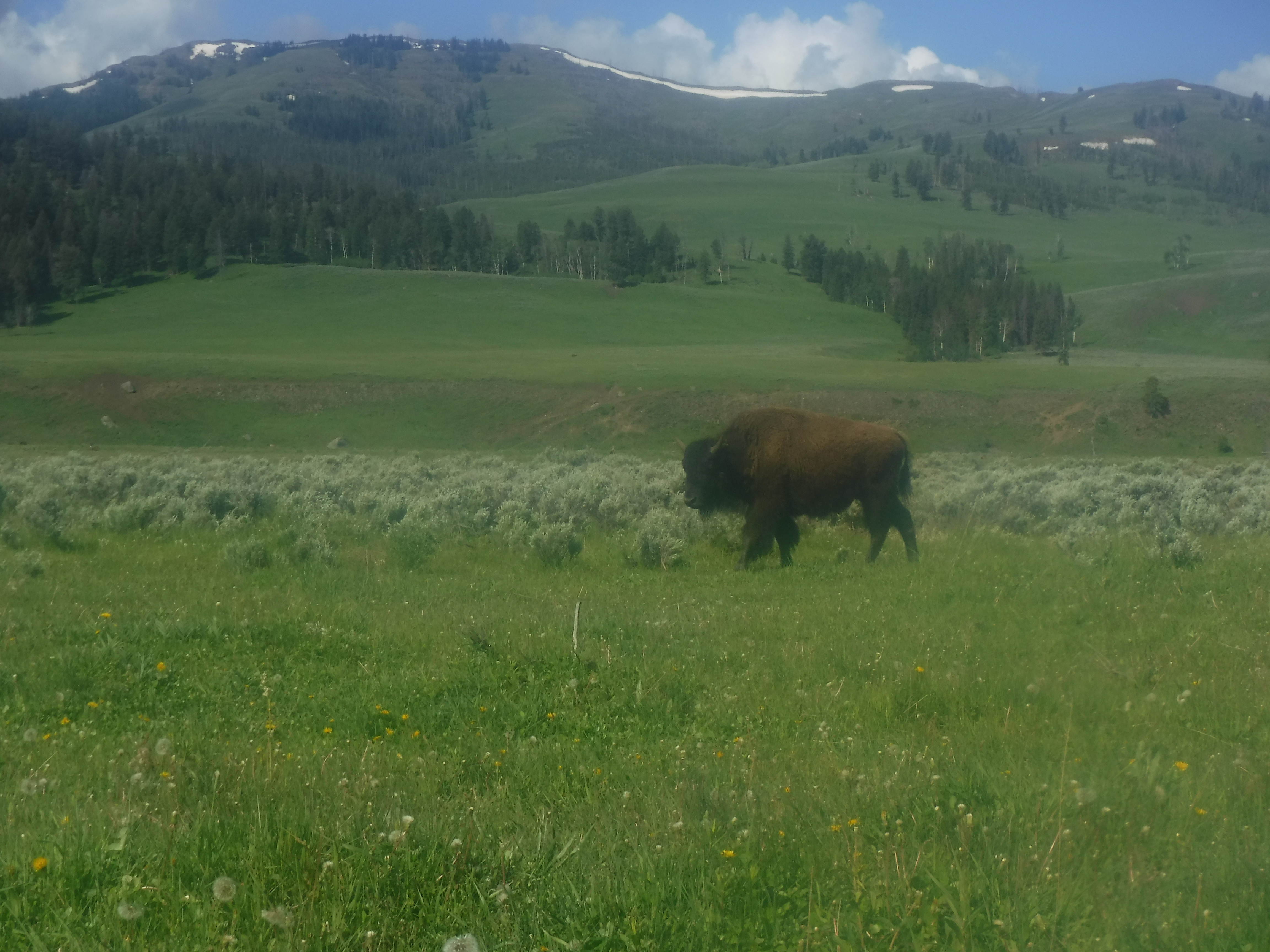
Bison roaming through Yellowstone National Park study site.
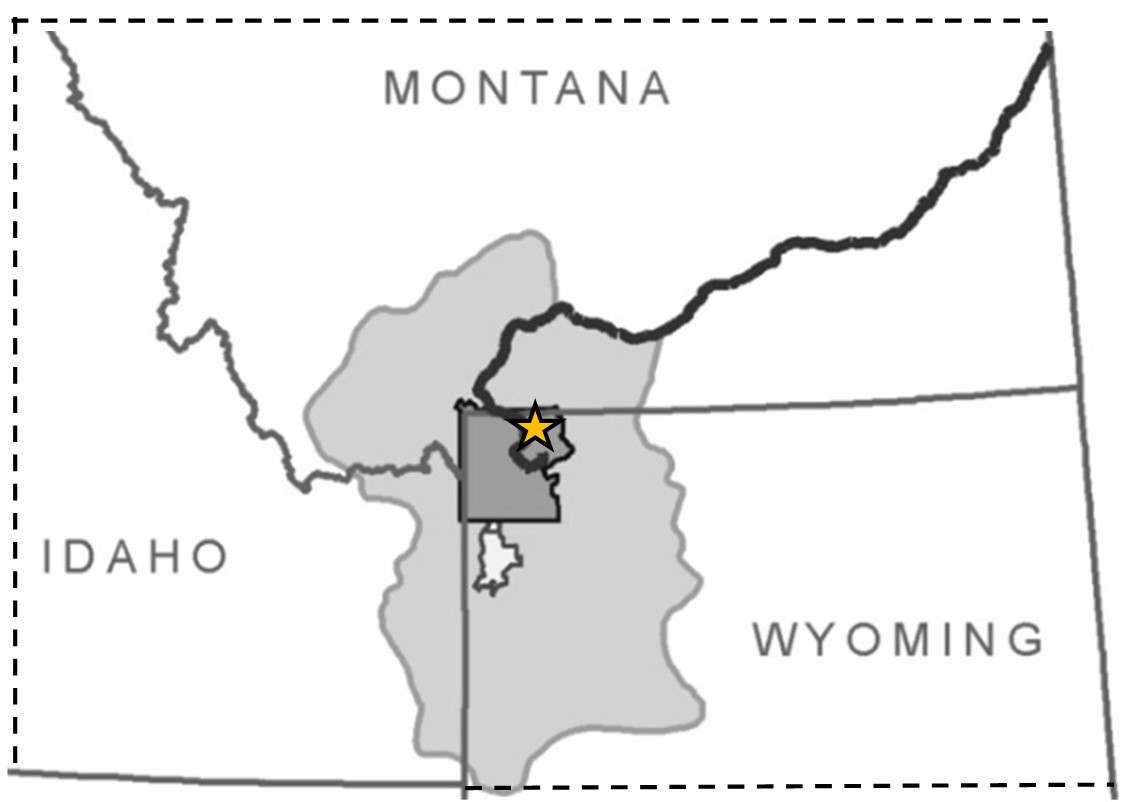 Northern range grasslands of Yellowstone National Park Northern range grasslands of Yellowstone National Park
|
|
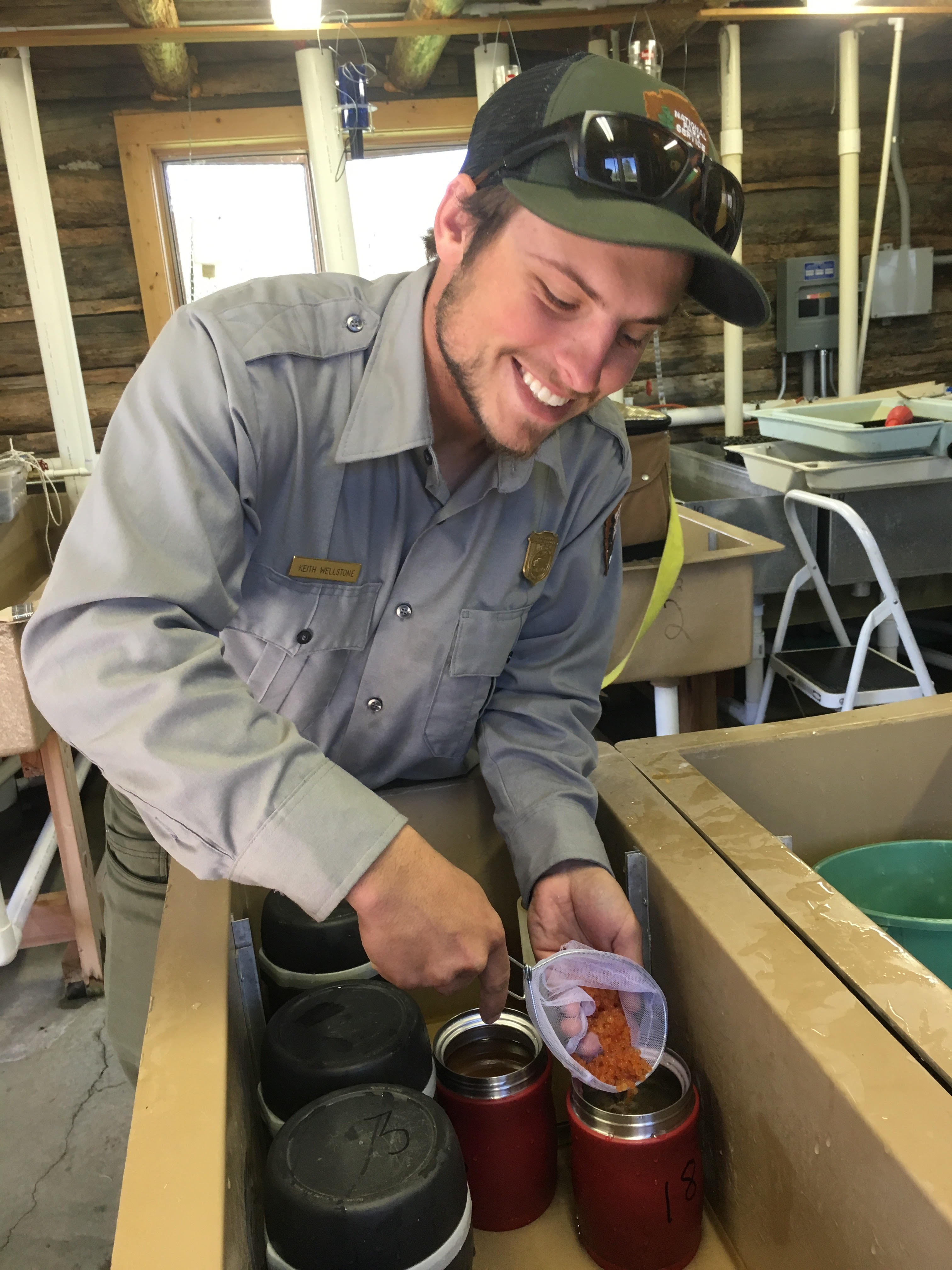
Keith Wellstone
Degree Program: MS, FIsh & Wildlife Management
|
An Evaluation of Trout Monitoring Strategies in the Lamar River Watershed, Yellowstone
National Park
Description: The Lamar River watershed, in Yellowstone National Park, is a large, fluvially-connected
river system that was once considered a stronghold for native, genetically-unaltered
Yellowstone cutthroat trout. Despite the federally protected status of aquatic habitats
in this watershed, Yellowstone cutthroat trout populations are threatened by competition,
predation, and hybridization with nonnative rainbow trout. These hybrid trout are
abundant in the lower Lamar River watershed, and because of the fluvial connectivity
of the system, appear to be invading the upper watershed. The National Park Service
has acted to remove rainbow and hybrid trout to mitigate the threat of further hybridization
in the upper Lamar River watershed. Whereas the National Park Service is taking actions
to remove rainbow trout and hybrids from the watershed, a standardized monitoring
protocol is desired to assess the response of fish populations to these management
actions and to monitor existing populations of Yellowstone cutthroat trout. Our research
focuses on evaluating monitoring strategies for Yellowstone cutthroat, rainbow, and
hybrid trout in the lower Lamar River watershed. Specifically, we will explore the
use of electrofishing, snorkeling, and standardized angling to evaluate cost-effective
strategies for monitoring the success of Yellowstone cutthroat trout recovery efforts
in the watershed.
Location: The Lamar River watershed, Yellowstone National Park
|
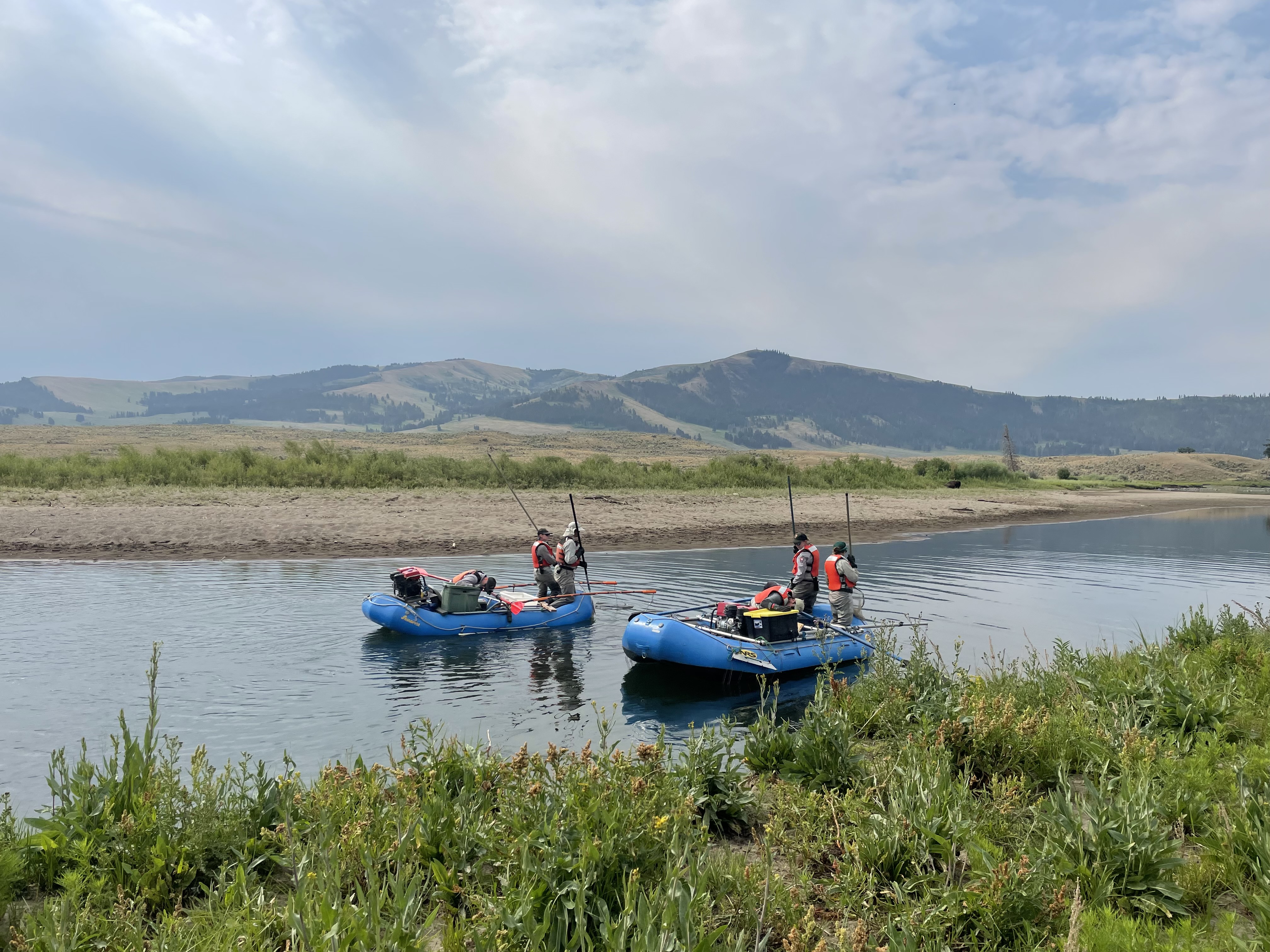 On the Lamar River, Yellowstone National Park On the Lamar River, Yellowstone National Park

The Lamar River watershed, Yellowstone National Park
|

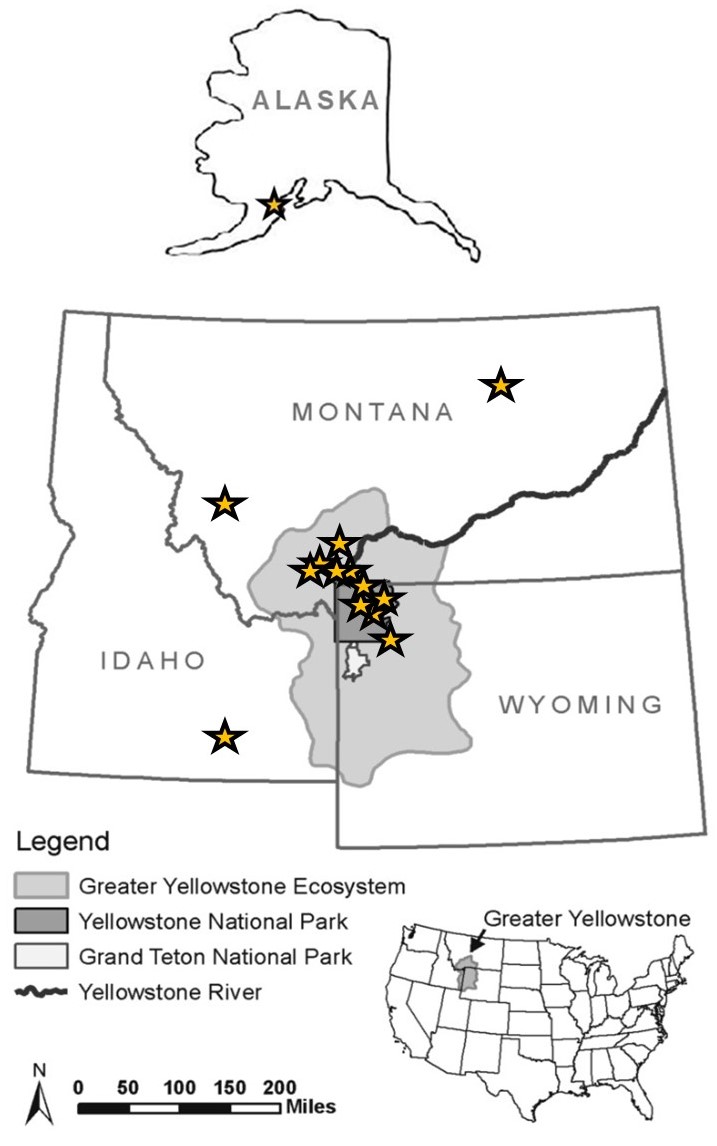

 A herd of bison moving across the prairie.
A herd of bison moving across the prairie. Bison GPS ear tag.
Bison GPS ear tag.


 Yellowstone Lake, YNP
Yellowstone Lake, YNP
 A bumble bee feeds on arnica blossom.
A bumble bee feeds on arnica blossom. A super "high-tech" contraption (a slushie cup) to collect floral scent.
A super "high-tech" contraption (a slushie cup) to collect floral scent. Fort Ellis, near Bozeman, Montana
Fort Ellis, near Bozeman, Montana





 Measuring Yellowstone cutthroat trout
Measuring Yellowstone cutthroat trout Tributaries of the Yellowstone River through Paradise Valley, Montana and parts of
Yellowstone National Park
Tributaries of the Yellowstone River through Paradise Valley, Montana and parts of
Yellowstone National Park
 Grizzly with cubs--NPS photo
Grizzly with cubs--NPS photo

 Roadside milkweed. Photo by Thomas Meinzen
Roadside milkweed. Photo by Thomas Meinzen Snake River Plain of Southern Idaho
Snake River Plain of Southern Idaho
 Dead whitebark pine
Dead whitebark pine Custer Gallatin National Forest (Hyalite Canyon & Beehive Basin, MT) and Shoshone
National Forest (Republic Creek, WY)
Custer Gallatin National Forest (Hyalite Canyon & Beehive Basin, MT) and Shoshone
National Forest (Republic Creek, WY) Alzada Roche
Alzada Roche Adult Salmonflies emerge on the Madison RIver between mid-June and early July. (Photo
by Mike MacDonald)
Adult Salmonflies emerge on the Madison RIver between mid-June and early July. (Photo
by Mike MacDonald)


 Northern range grasslands of Yellowstone National Park
Northern range grasslands of Yellowstone National Park
 On the Lamar River, Yellowstone National Park
On the Lamar River, Yellowstone National Park